Chemistry and Chemists № 1 2024
Journal of Chemists-Enthusiasts
| Content | Chemistry experiments - video | Physics experiments - video | Home Page - Chemistry and Chemists |
|
Chemistry and Chemists № 1 2024 Journal of Chemists-Enthusiasts |
Horse chestnut, cologne, emulsion and fluorescence (esculin) - pt.4, 5 V.M. Viter |
|
Having noticed a mistake in the text, allocate it and press Ctrl-Enter
Horse chestnut bark, ethanol, water and iron (III) chloride - pt.4
After previous experiments, I still had a jar with horse chestnut bark (Aesculus hippocastanum) filled with ethanol. I planned to conduct another experiment with this extract. In the previous parts of the article, the fluorescence of aesculin extracted from chestnut bark with ethyl alcohol was described. The formation of an emulsion by mixing chestnut seed extract with water has also been described. However, no emulsion formed when I added one drop of ethanolic extract of horse chestnut bark to the water. I assumed the bark does not contain lipids, which first dissolve in ethanol and then form an emulsion when the extract is mixed with water.
Кора конского каштана, этанол, вода и хлорид железа (III) - ч.4 This time, I planned to get a ferric cation (Fe3+) complex with tannins. Tannins are natural polyphenols that are found in various parts of some plants. The biological role of tannins is to protect the plant from being eaten by animals. Tannins have a characteristic bitter, astringent taste; they make fruits (and other plant parts) inedible or unpalatable to herbivores. A characteristic property of tannins is the formation of black or dark purple complexes with divalent and trivalent iron salts. A well-known example of a plant rich in tannins is oak. As you know, oak apples (also known as oak galls), which form on oak leaves, were previously used to prepare ink by adding iron sulfate to them. In various literary sources, I have come across mentions that the bark of the horse chestnut is also rich in tannins. On the other hand, ethanol is one of the solvents used to extract tannins from plants. In this case, the extract was already prepared, so I could start the experiment. I poured 100 ml of distilled water into a glass. I added about 1 ml of the bark extract with a pipette; the result was a white, cloudy stream in the glass. I stirred the contents of the glass, and a white emulsion formed, similar to the emulsion formed when mixing the alcoholic extract of the chestnut seeds with water. However, I wrote it was not possible to obtain an emulsion using bark extract in ethanol in previous experiments. And so it was. But, I added only a drop of the extract to water and stirred - no emulsion was formed. It turned out that more extract should have been used. In any case, we have already obtained an emulsion (not only in the experiments described in this article). The current goal is to observe the formation of a ferric iron complex with tannins. I added a drop of a saturated solution of iron (III) chloride to the glass with the emulsion and mix. I expected a black or dark purple colour of the solution to appear. Instead, the yellow droplet sank to the bottom, and the yellow colour disappeared after stirring. The liquid remained white. I added a few more drops of iron (III) chloride and stirred. The liquid turned yellowish. When I introduced a little more extract, the liquid became more cloudy. Thus, the characteristic colour of the iron (III) complex with tannins did not appear. The result of the experiment is negative. It would not have been worth writing about the negative result at all (you do not need to know what someone has NOT succeeded in doing something) if I had not remembered the fluorescence of aesculin in ultraviolet light. So, I continued the experiment and got an interesting result using the liquids that were mentioned above. As you may have guessed, this was not the result I had initially planned. |

|
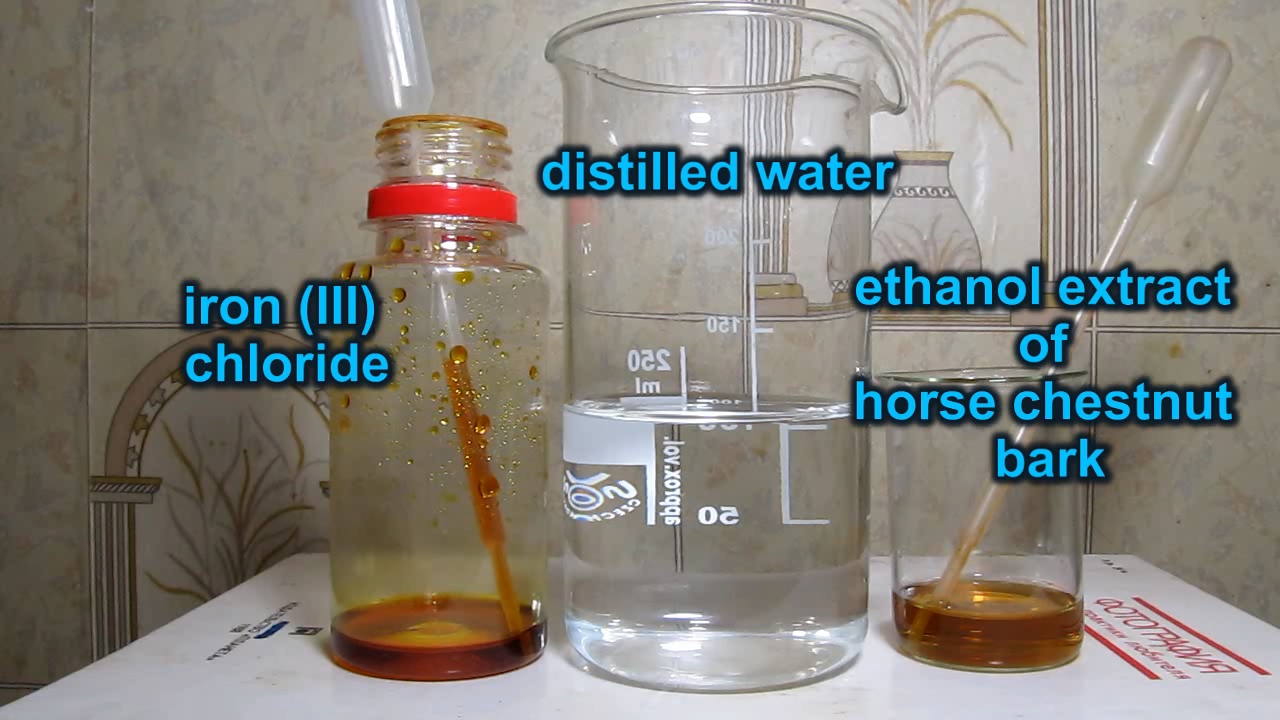
Horse chestnut bark, ethanol, water and iron (III) chloride |
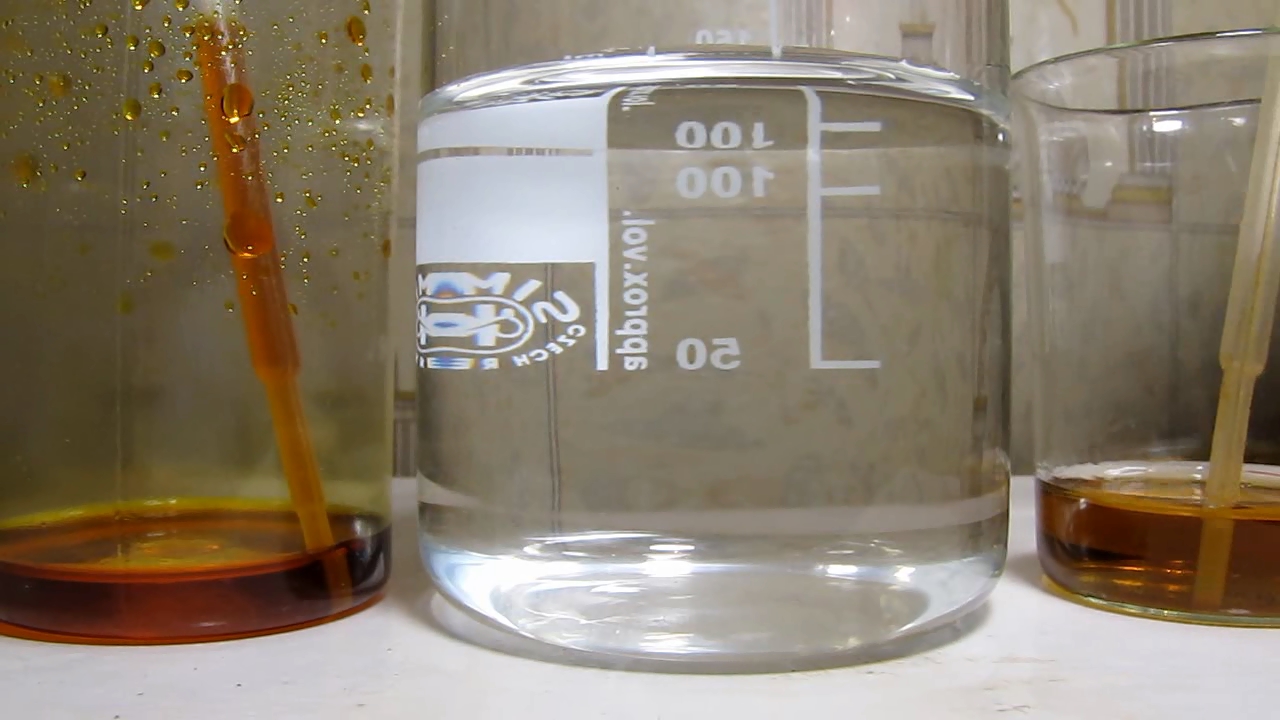
|
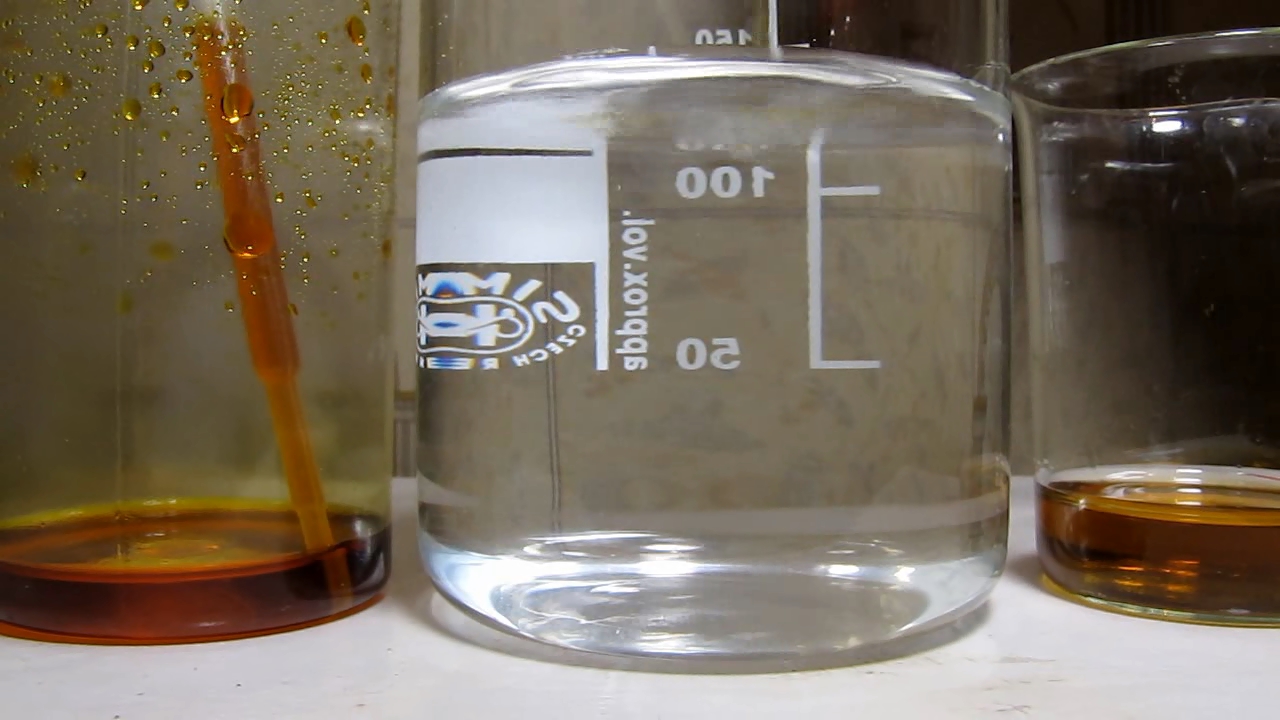
|
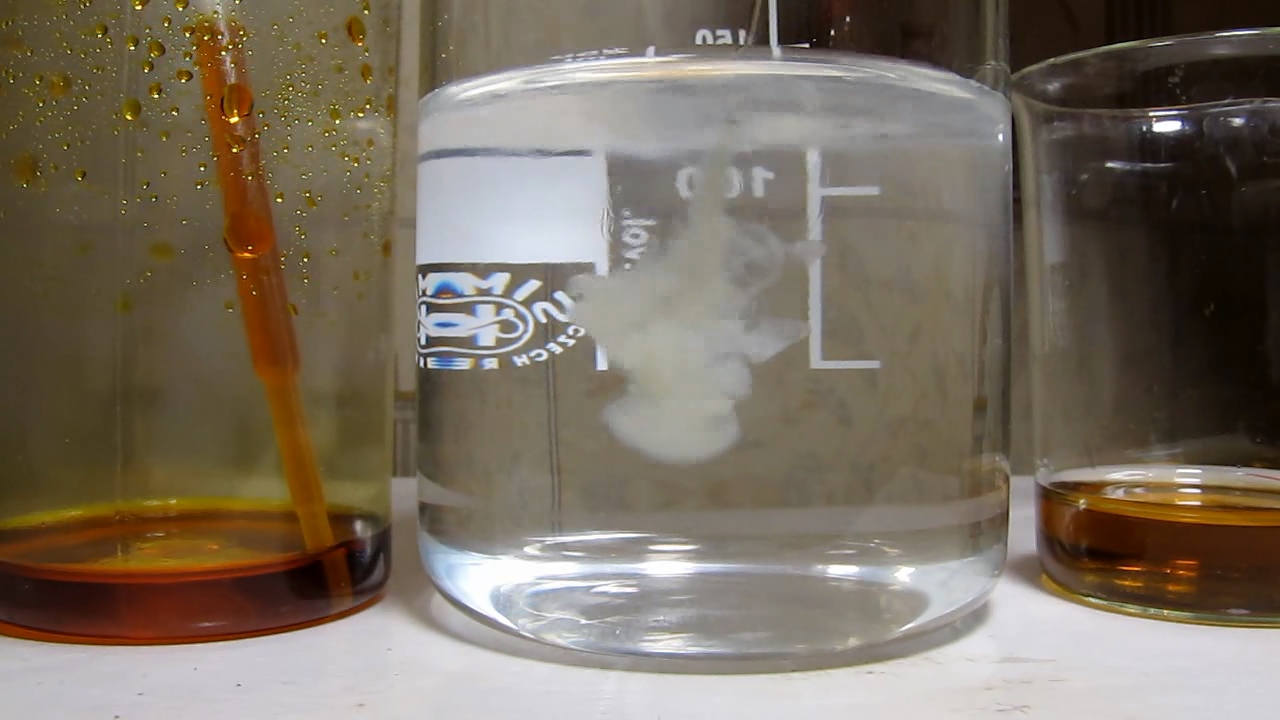
|
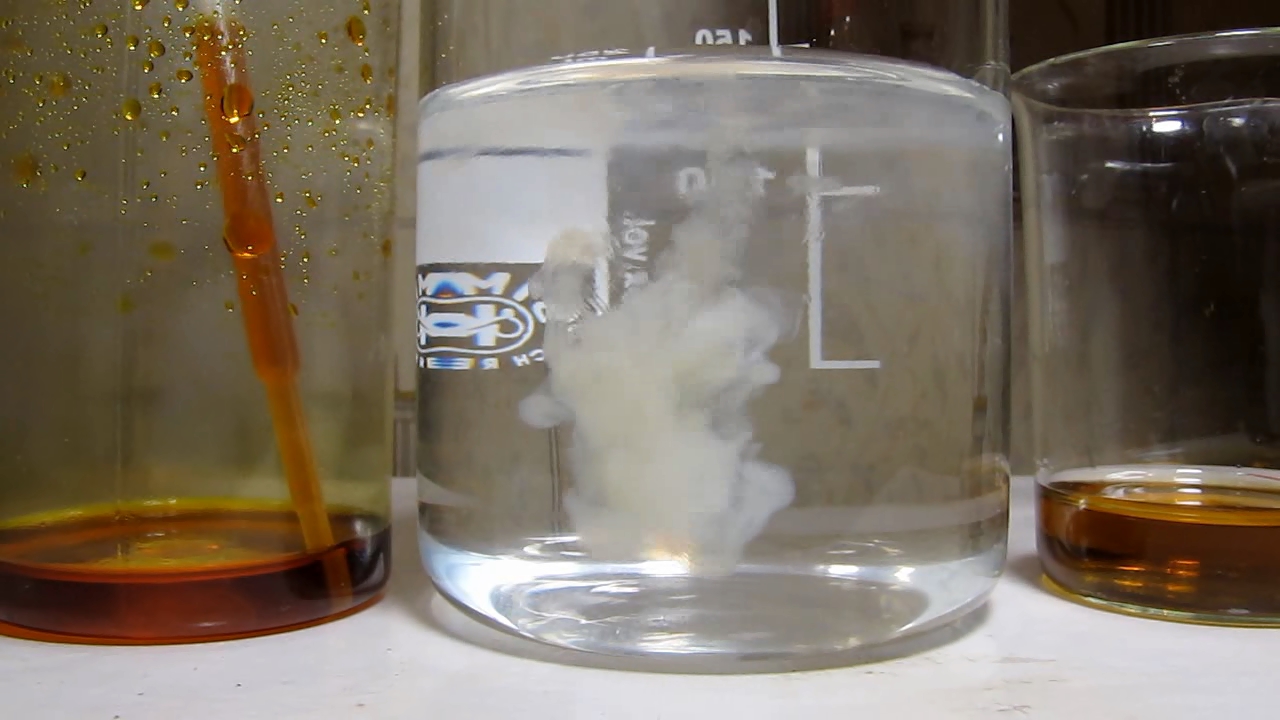
|
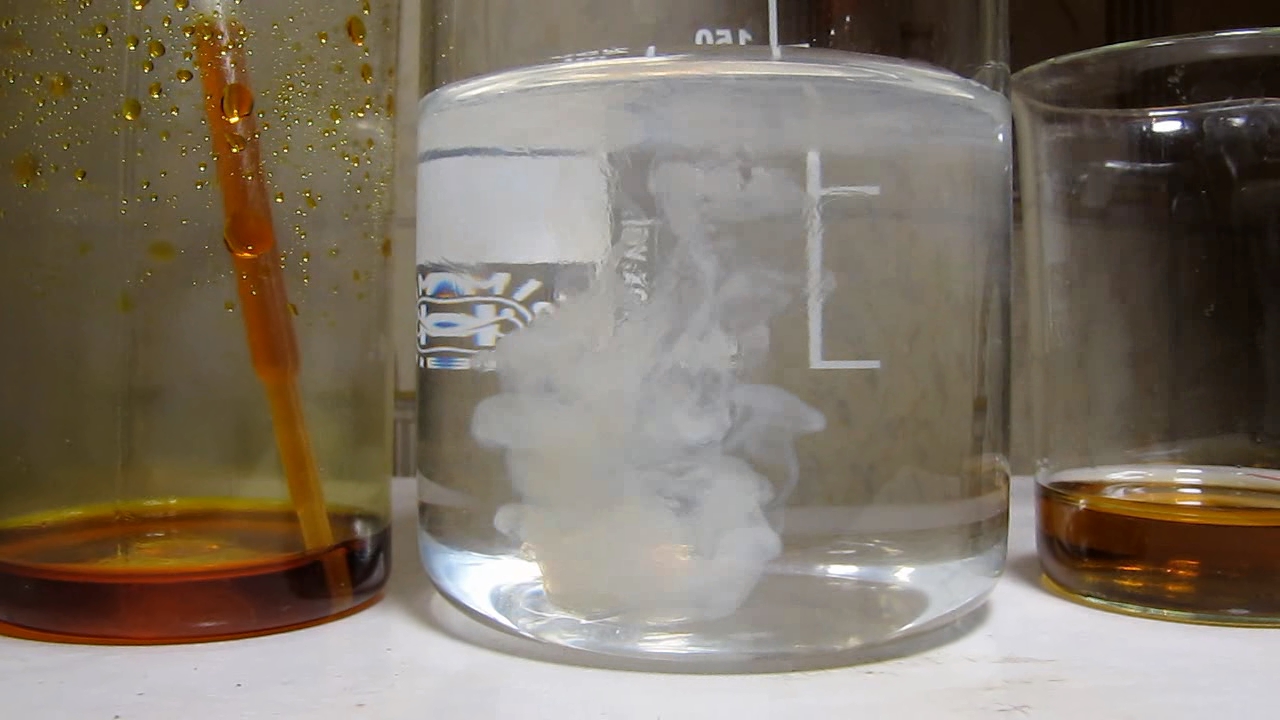
|
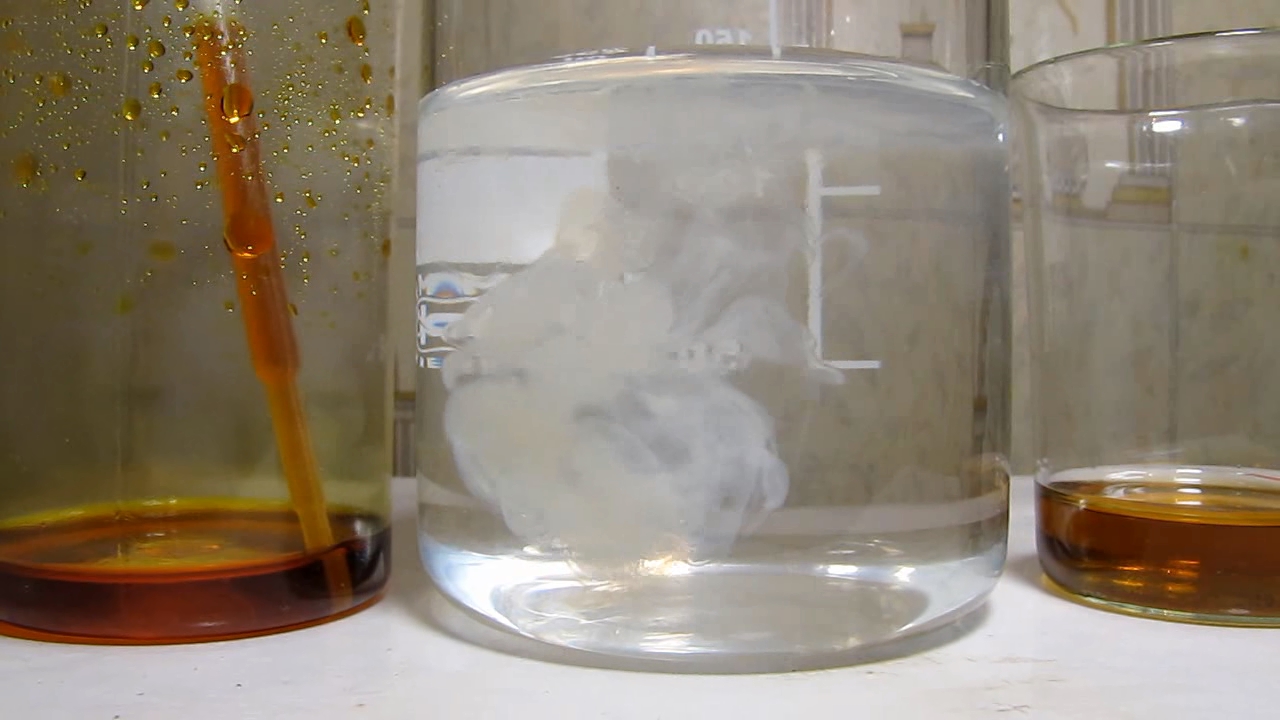
|
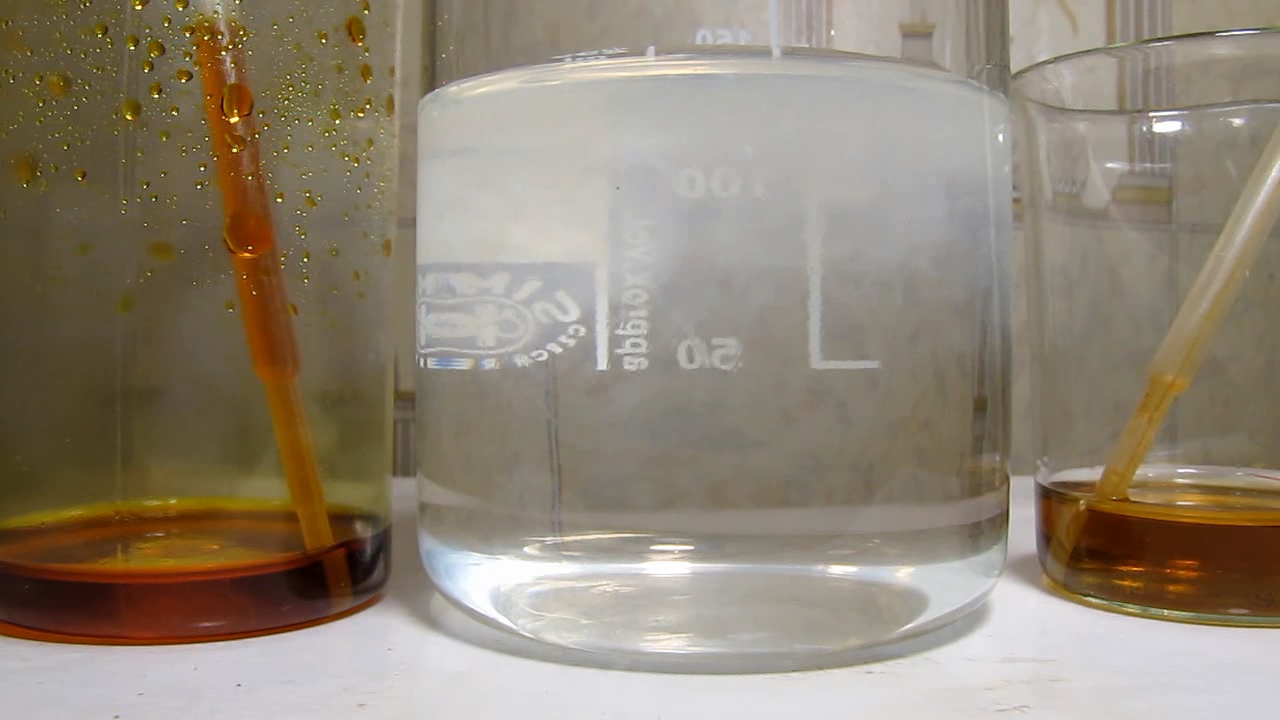
|
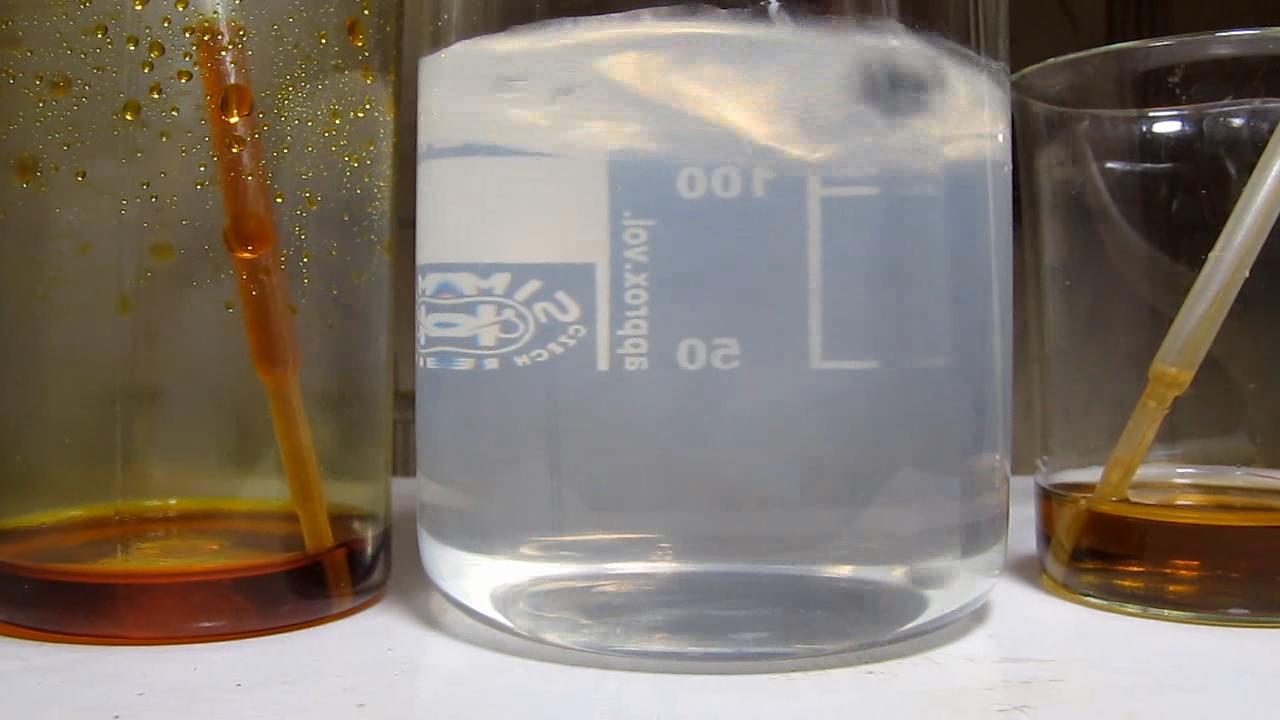
|

|
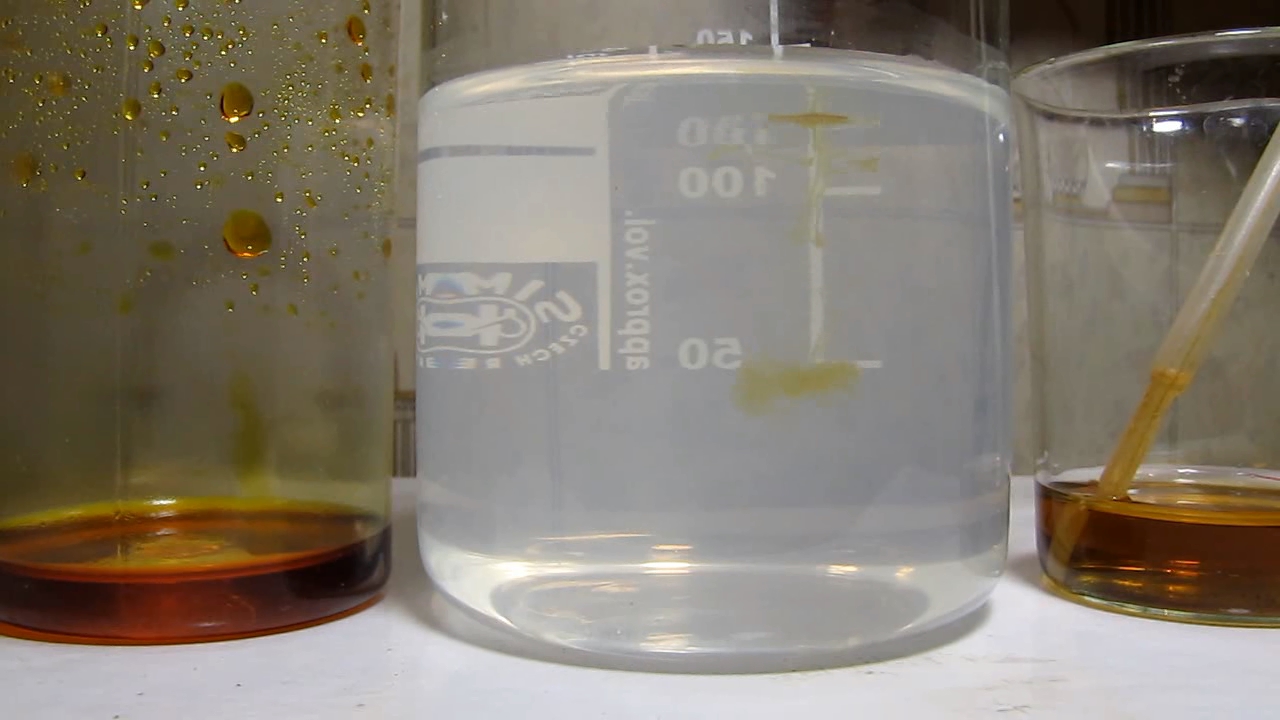
|
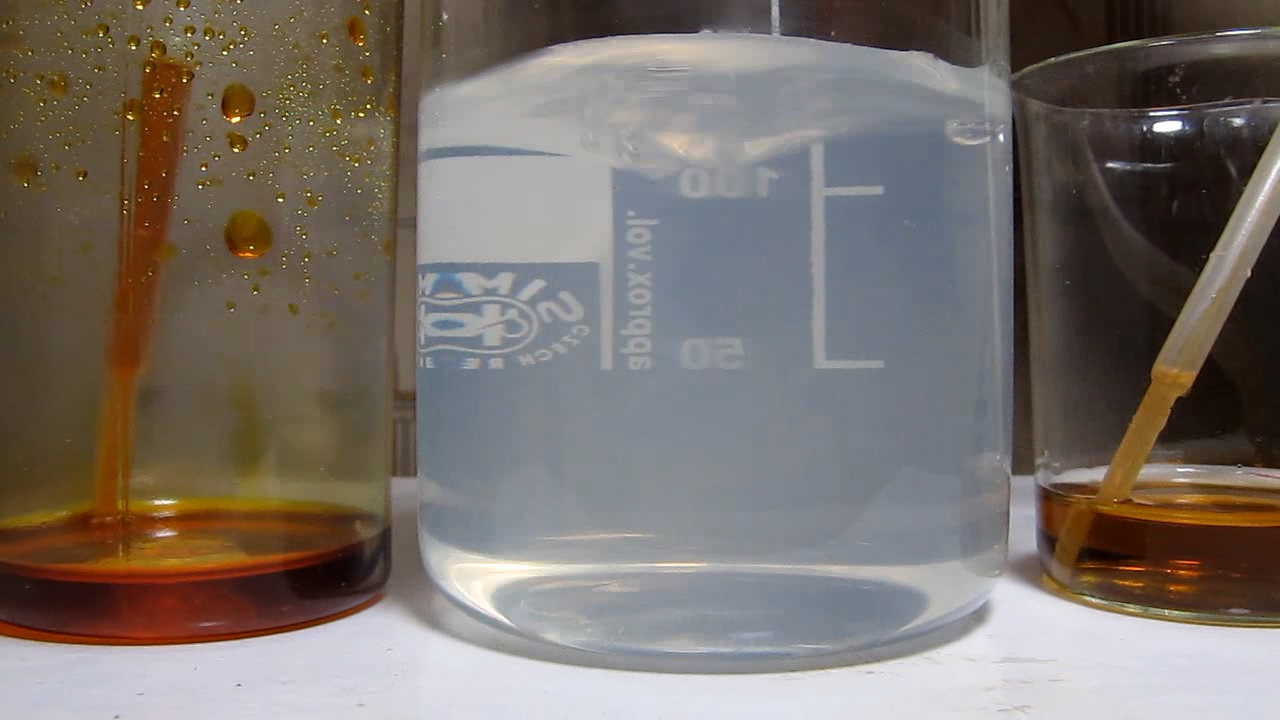
|
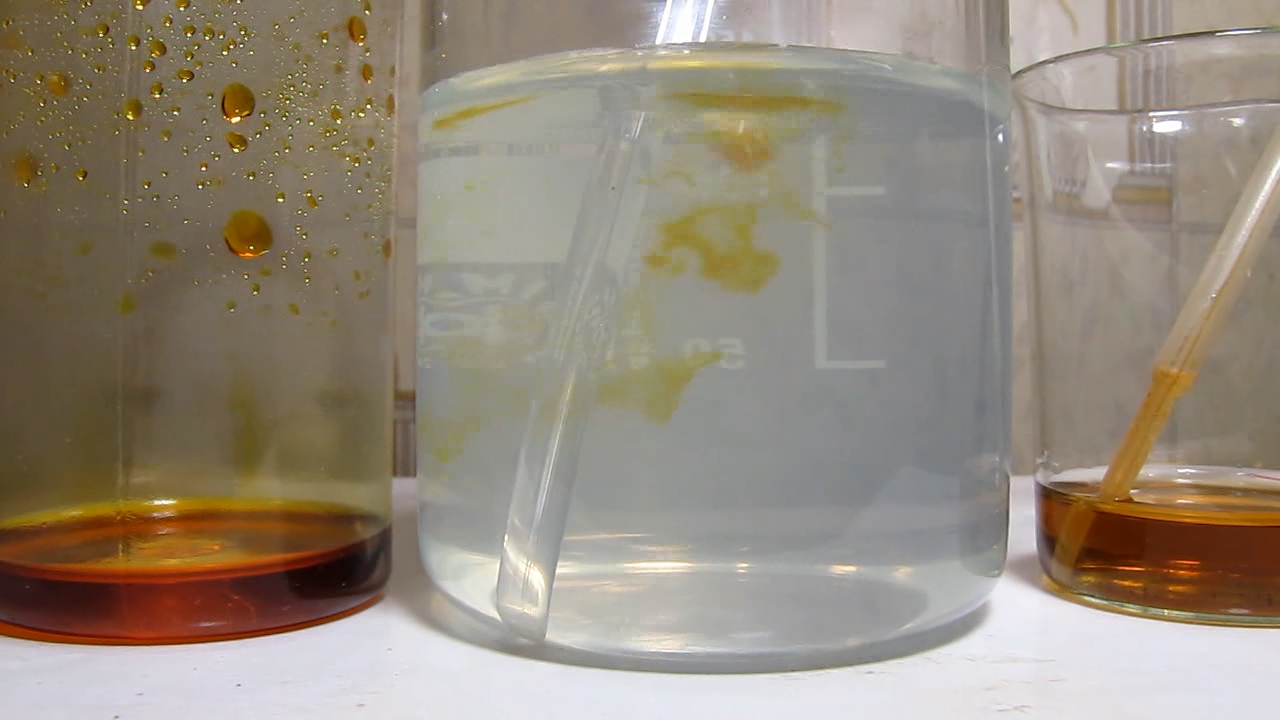
|
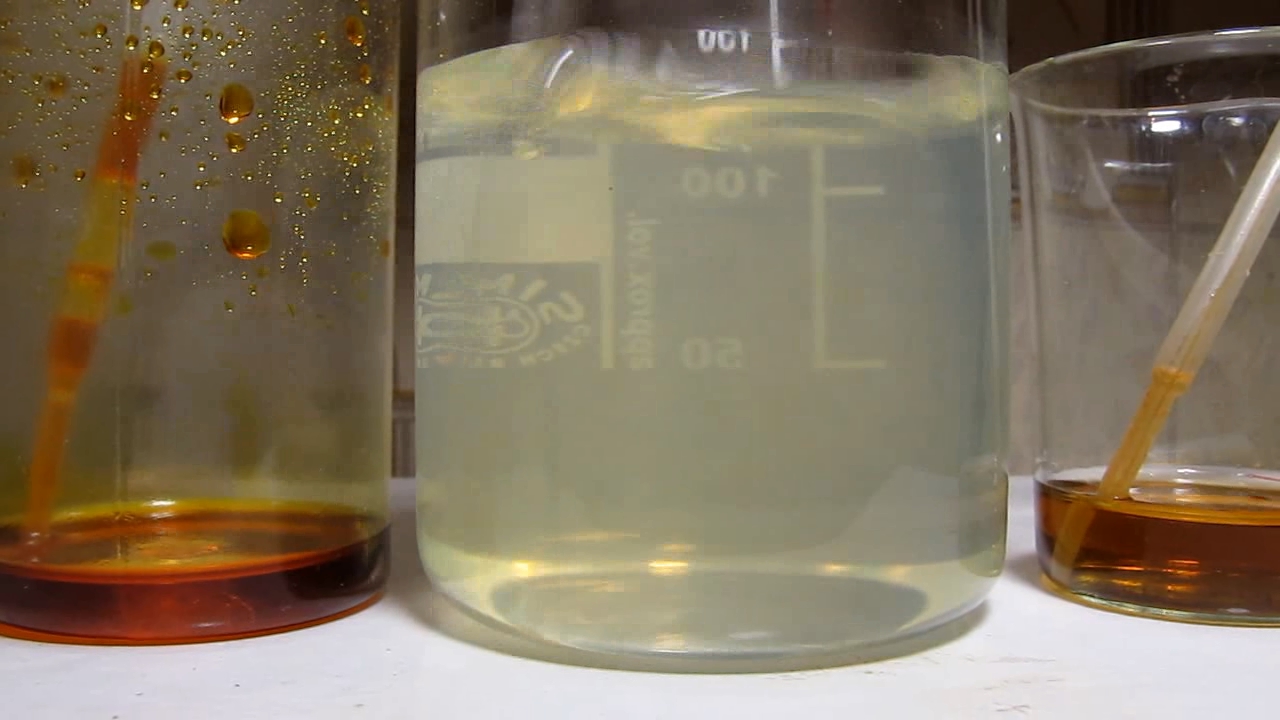
|
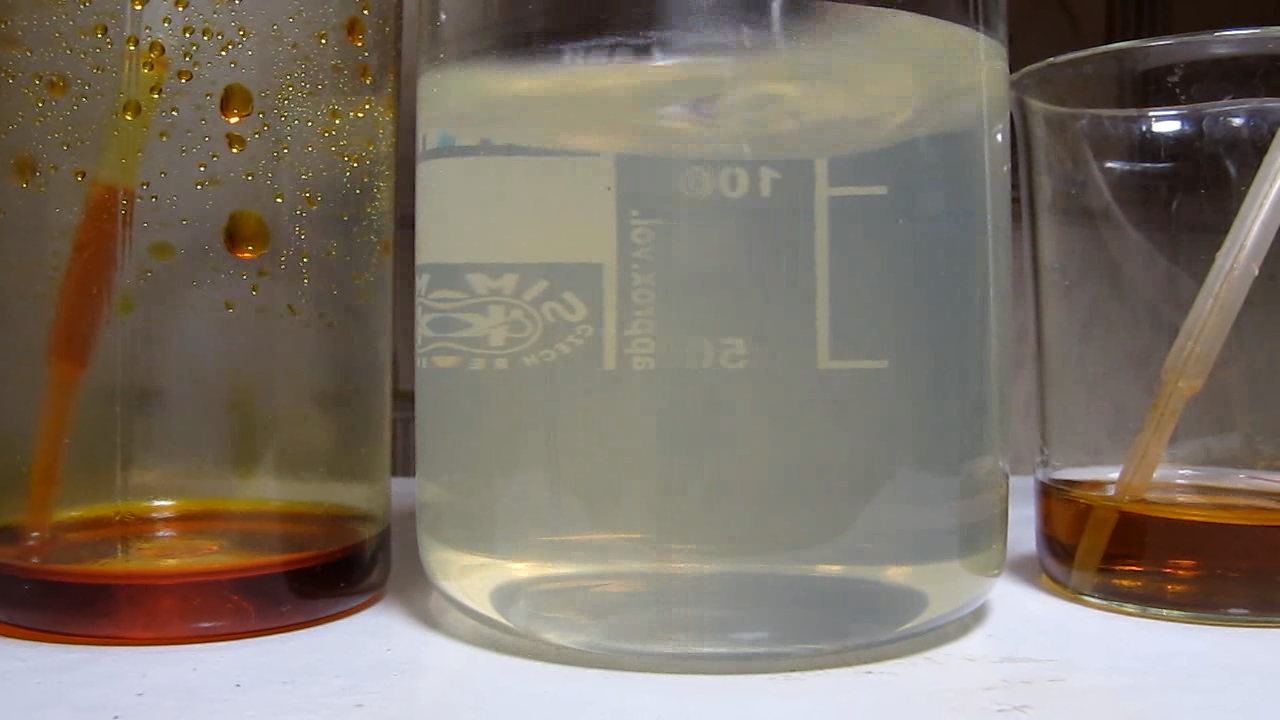
|
|
Having noticed a mistake in the text, allocate it and press Ctrl-Enter
Horse chestnut bark, ethanol, water and fluorescence - pt.5
So, I added horse chestnut bark extract (Aesculus hippocastanum) to water, resulting in an emulsion. The emulsion is of no interest in this case. On the other hand, the original ethanolic extract fluoresces brightly under ultraviolet light because it contains aesculin. The question arises: what will happen as a result of adding the extract to water when illuminated with an ultraviolet lamp?
Кора конского каштана, этанол, вода и флуоресценция - ч.5 I poured 100 ml of distilled water into a glass. I placed a glass with horse chestnut extract next to it. I attached an ultraviolet lamp above the glasses. First, I turned on the ultraviolet lamp with the electric lighting on (incandescent lamp). The extract glowed blue, and the glass of water remained unchanged. The bottom background presented an unpleasant surprise. As the bottom background, I used a book - a catalogue of isotope labelled compounds. The catalogue had a black cover. For such experiments, a black, non-fluorescent background is required. However, it turned out that the black cover glowed blue in ultraviolet rays and relatively brightly. The background glow was undesirable, but I did not change the background in the middle of the experiment. I turned off the incandescent lamp - the room became dark. Then, I turned on the ultraviolet light. As a result, the extract glowed brightly with blue light, the background glowed moderately, and the water did not glow. I added the extract drop by drop to the water. Consequently, the top layer of water acquired a blue diffuse glow. I stirred the content - all the water began to glow in the glass. After this, I quickly added 1 ml of extract to the glass. A luminous stream 'flashed' in the beaker, which resembled the release of luminous squid ink in the dark. I mixed the liquid. Now, the liquid in the glass glowed with a bright blue light, reminiscent of the chemiluminescence of luminol. The difference was that the glow of luminol lasts for seconds, or at best minutes, while our solution could glow as long as the ultraviolet lamp was on. I placed the lamp over the glass and attached it as close to the liquid as possible to enhance the glow. Thus, the extract must be added not gradually, drop by drop, but quickly, in portions of 1 ml (or more). This will achieve the best visual effect. For comparison, an aqueous solution of fluorescein (an ammonium salt) was placed next to the beaker. It turned out that fluorescein glowed much brighter than aesculin. In turn, the aqueous solution of aesculin glowed brighter in the glass than the original bark extract. This did not come as a surprise since increasing the concentration of a substance does not always increase its fluorescence. The increase in glowing occurs only up to a certain limit, after which a further increase in concentration quenches the fluorescence. For example, the mentioned fluorescein glows brightly in dilute solutions when irradiated with ultraviolet light. However, as the fluorescein concentration increases, the green solution turns brown and exhibits almost no fluorescence when exposed to visible or ultraviolet radiation. Diluting the ethanolic extract of aesculin with water increased the fluorescence of the liquid. I remembered that curcumin containing ethanolic extract behaves in the opposite way. Under an ultraviolet lamp, it glows green, but when the extract is added to water, the glow instantly disappears [1]. But that is not all. Let's return to iron (III) chloride. In a previous experiment, I added iron(III) chloride to a water-diluted extract of horse chestnut bark, hoping to observe the formation of an intensely coloured iron-tannin complex. This did not happen, so I began experiments on the fluorescence of aesculin under ultraviolet light. I did not pour out the solution to which iron (III) chloride was added. It stood nearby. While experimenting with ultraviolet light, I noticed that a beaker containing water, the bark extract, and iron(III) chloride produced almost no fluorescence under ultraviolet light. This means that iron (III) chloride somehow quenches the fluorescence of aesculin. To confirm this statement, I conducted an additional experiment. I had a glass with water to which I added the extract. The liquid glowed brightly under an ultraviolet lamp, reminiscent of the luminol oxidation reaction. I added a little saturated solution of iron (III) chloride and stirred. The glow of the lower layers of the liquid weakened very much, but the upper layer continued to glow brightly. Then, I added more ferric chloride FeCl3 and stirred. As a result, the liquid in the glass became 'really black'. The glow of most of the liquid disappeared entirely; only the thin top layer continued to glow. What do I mean by 'really black' liquid? The fact is that an ultraviolet lamp produces a little light in the visible part of the spectrum, which is reflected from surrounding objects. In addition, some dust particles are present on the surfaces; these particles glow in ultraviolet rays. Some surrounding objects also emit luminescence in ultraviolet rays. Therefore, the water in the glass and the dark background did not look completely black even BEFORE adding the extract (even though I replaced the fluorescent bottom background). After adding aesculin extract to distilled water, the solution glowed bright blue. But after adding iron (III) chloride, the solution did not emit blue light (except for the thin top layer); moreover, it absorbed visible light produced by the ultraviolet lamp and by the luminescence of surrounding objects. The yellow or brown colour of an iron(III) chloride solution indicates that it absorbs blue and violet light well. Apparently, this compound absorbs ultraviolet light even better; due to this, iron(III) chloride quenches the fluorescence of aesculin. Ultraviolet light penetrated only into the thin top layer of the solution, where the blue glow was preserved. Ultraviolet rays did not penetrate deeper into the liquid, so no fluorescence was observed there. Under incandescent light, the liquid in the glass looked brown but not black. The yellow and red parts of the spectrum were absorbed much weaker by the solution than the blue and violet ones. __________________________________________________ 1 See the article Water extinguishes fluorescence (curcumin, ethanol and water under ultraviolet) / Вода гасит флуоресценцию (куркумин, этанол и вода в ультрафиолете) [link]. |
|
Кора конского каштана, этанол, вода и флуоресценция - ч.5
Итак, я добавил экстракт коры конского каштана обыкновенного (Aesculus hippocastanum, horse chestnut) в воду, в результате этого образовалась эмульсия. Эмульсия в данном случае не представляет интереса. С другой стороны, исходный спиртовый экстракт ярко флуоресцирует в ультрафиолетовом свете, поскольку он содержит эскулин. Возник вопрос: что произойдет в результате добавлении экстракта в воду при освещении ультрафиолетовой лампой?
Налил в стакан 100 мл дистиллированной воды. Рядом поставил стакан с экстрактом конского каштана. Закрепил над стаканами ультрафиолетовую лампу. Сначала включил ультрафиолетовую лампу при включенном электрическом освещении (лампа накаливания). Экстракт засветился синим, стакан с водой не изменился. Неприятный сюрприз преподнес нижний фон. В качестве нижнего фона я использовал книгу - каталог веществ с изотопной меткой. Каталог имел черную обложку. Для подобных экспериментов необходим черный, не флуоресцентный фон. Однако, оказалось, что в ультрафиолетовых лучах черная обложка светилась синим цветом, причем сравнительно ярко. Свечение фона было нежелательным, но я не стал менять фон посреди эксперимента. Выключил лампу накаливания - в комнате стало темно. Включил ультрафиолетовую лампу. В результате экстракт ярко светился синим светом, фон светился умеренно, вода - не светилась. Добавил экстракт по капле в воду, вследствие чего верхний слой воды приобрел синее диффузное свечение. Перемешал содержимое стакана - вся вода засветилась. После этого быстро добавил в стакан сразу 1 мл экстракта. В стакане 'вспыхнула' светящаяся струя, которая напоминала выброс фосфоресцирующих чернил кальмара в темноте. Перемешал содержимое. Теперь жидкость в стакане светилась ярким синим светом, напоминая хемилюминесценцию люминола. Разница была в том, что свечение люминола продолжается секунды, в лучшем случае - минуты, а наш раствор мог светиться до тех пор, пока горит ультрафиолетовая лампа. Для усиления свечения разместил лампу над стаканом и максимально приблизил ее к жидкости. Таким образом, экстракт необходимо добавлять не постепенно, по капле, а быстро, порциями в 1 мл (или больше). Так будет достигнут лучший визуальный эффект. Для сравнения рядом со стаканом поместил водный раствор флуоресцеина (аммониевая соль). Оказалось, что флуоресцеин светился значительно ярче, чем эскулин. В свою очередь водный раствор эскулина в стакане светился ярче, чем исходный экстракт коры. Это не стало неожиданностью, поскольку увеличение концентрации вещества не всегда усиливает его флуоресценцию. Усиление свечения происходит только до определенного предела, после чего дальнейшее увеличение концентрации гасит флуоресценцию. Например, упомянутый флуоресцеин ярко светится в разбавленных растворах, если их облучить ультрафиолетом. Однако, при увеличении концентрации флуоресцеина зеленый раствор становится коричневым и почти не дает флуоресценцию под действием видимого или ультрафиолетового излучения. Разбавление спиртового экстракта эскулина водой усилило флуоресценцию жидкости. Вспомнил, что экстракт куркумина в этиловом спирте ведет себя противоположным образом. Под ультрафиолетовой лампой он светится зеленым светом, а при добавлении экстракта в воду свечение моментально исчезает [1]. Но это еще не все. Вернемся к хлориду железа (III). В прошлом опыте я добавил хлорид железа (III) к разбавленному водой экстракту коры конского каштана в надежде наблюдать образования интенсивно окрашенного комплекса железа с танинами. Этого не произошло, поэтому я занялся экспериментами по флуоресценции эскулина в ультрафиолетовом свете. Раствор, в который был добавлен хлорид железа (III), я не вылил. Он стоял рядом. Во время экспериментов с ультрафиолетовым светом я заметил, что стакан, в котором были вода, экстракт коры и хлорид железа (III), почти не дает флуоресценции в ультрафиолете. Значит, хлорид железа (III) каким-то образом гасит флуоресценцию эскулина. Чтобы подтвердить это утверждение, провел дополнительный эксперимент. У меня был стакан с водой, куда я добавил экстракт. Жидкость ярко светилась под ультрафиолетовой лампой, напоминая реакцию окисления люминола. Добавил немного насыщенного раствора хлорида железа (III), перемешал. Свечение нижних слоев жидкости сильно ослабло, но верхний слой продолжал ярко светиться. Добавил еще хлорида трехвалентного железа, перемешал. В результате жидкость в стакане стала 'по настоящему черной'. Свечение большей части жидкости исчезло полностью, продолжал светиться только тонкий верхний слой. Что я имею в виду под фразой 'по настоящему черная' жидкость? Дело в том, что ультрафиолетовая лампа дает немного света в видимой части спектра, который отражается от окружающих предметов. Кроме того, на поверхностях присутствуют частички пыли, светящиеся в ультрафиолетовых лучах. Некоторые окружающие предметы также дают люминесценцию в ультрафиолетовых лучах. Поэтому и вода в стакане, и темный фон не выглядели полностью черными даже ДО добавления экстракта (несмотря на то, что я заменил флуоресцентный нижний фон). После добавления экстракта эскулина в дистиллированную воду раствор ярко светился синим цветом. Зато после добавления хлорида железа (III) раствор не только не излучал синий свет (за исключением тонкого верхнего слоя), но поглощал видимые лучи, которые давала ультрафиолетовая лампа и люминесценция окружающих объектов. Желтый или коричневый цвет раствора хлорида железа (III) свидетельствует о том, что он хорошо поглощает синий и фиолетовый свет. По-видимому, ультрафиолетовый свет данное соединение поглощает еще лучше, за счет этого оно гасит флуоресценцию эскулина. Ультрафиолетовый свет проникал только в тонкий верхний слой раствора, где и сохранилось синее свечение. Глубже в жидкость ультрафиолетовые лучи не проникали, в результате чего флуоресценция там не наблюдалось. При свете лампы накаливания жидкость в стакане выглядела коричневой, но не черной. Желтая и красная часть спектра поглощалась раствором значительно слабее, чем синяя и фиолетовая. |

Horse chestnut bark, ethanol, water and fluorescence |
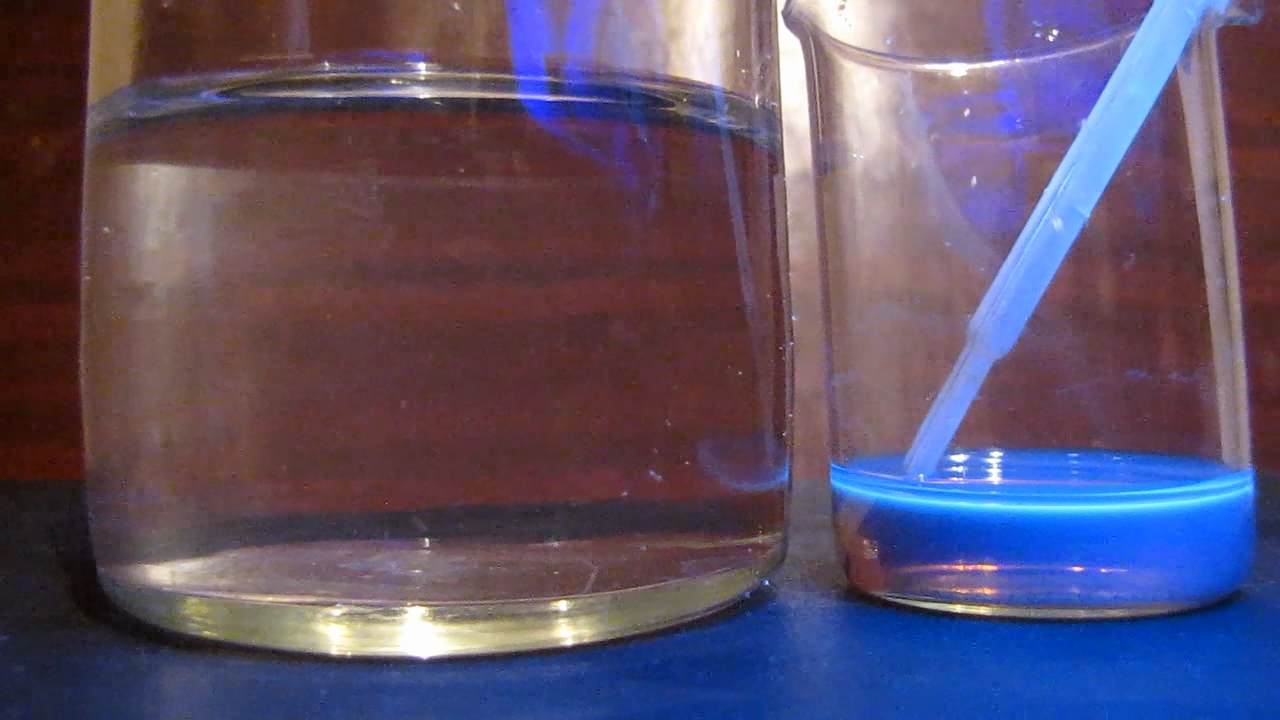
|

|
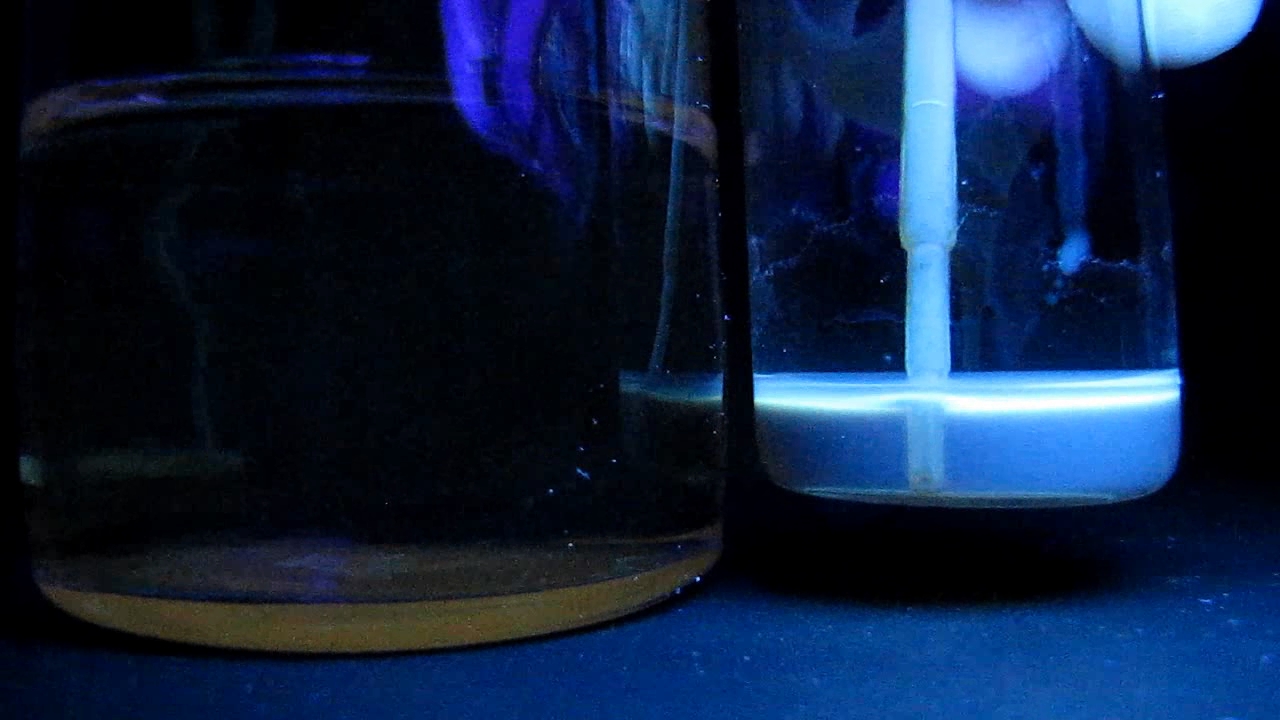
|

|
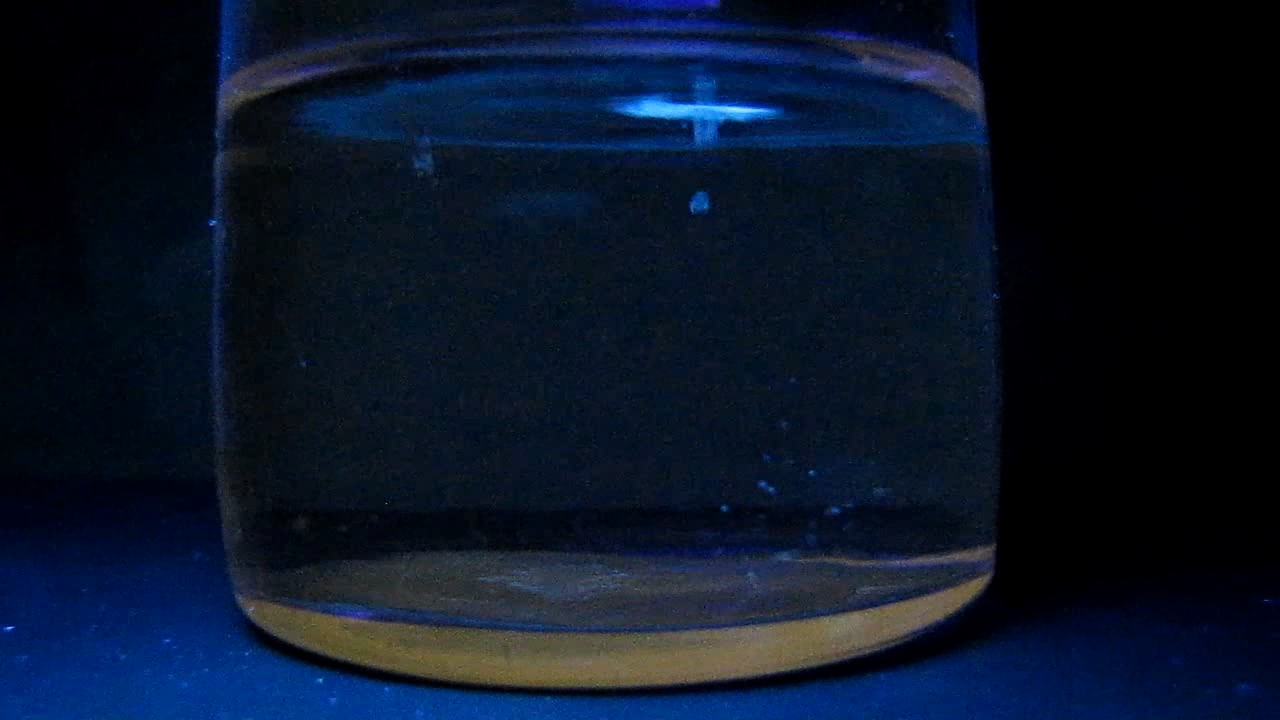
|
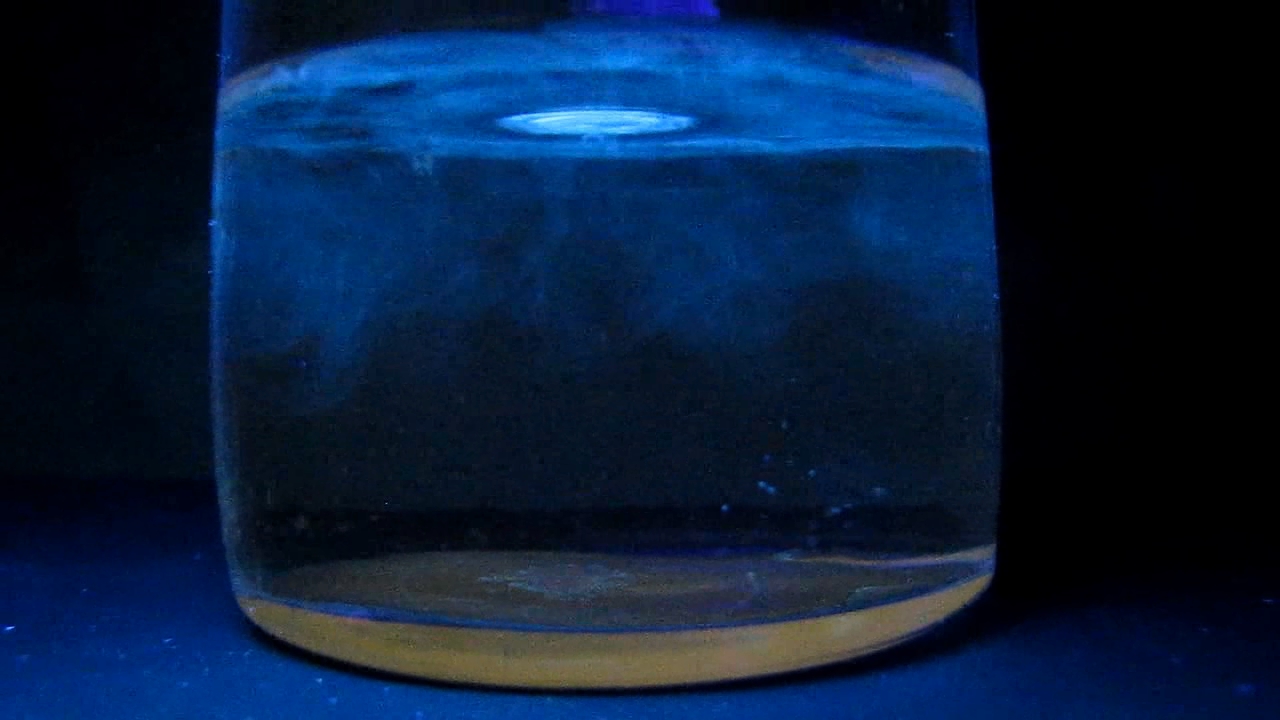
|
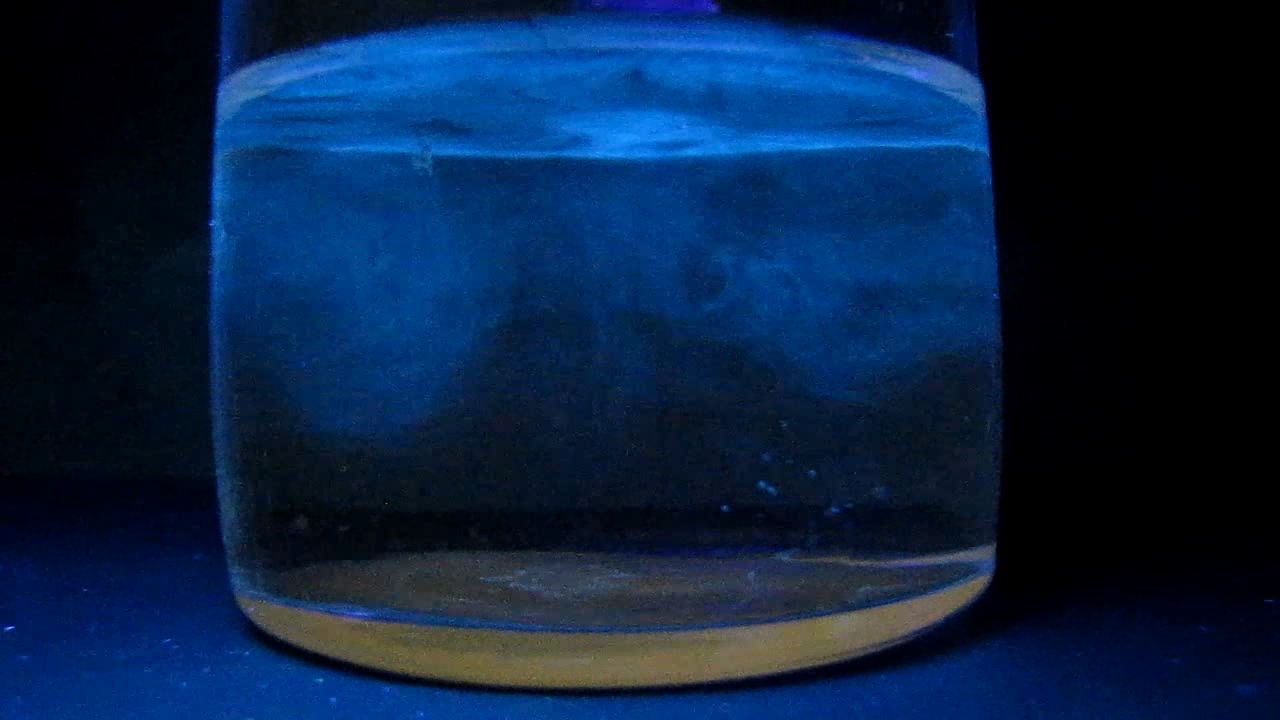
|
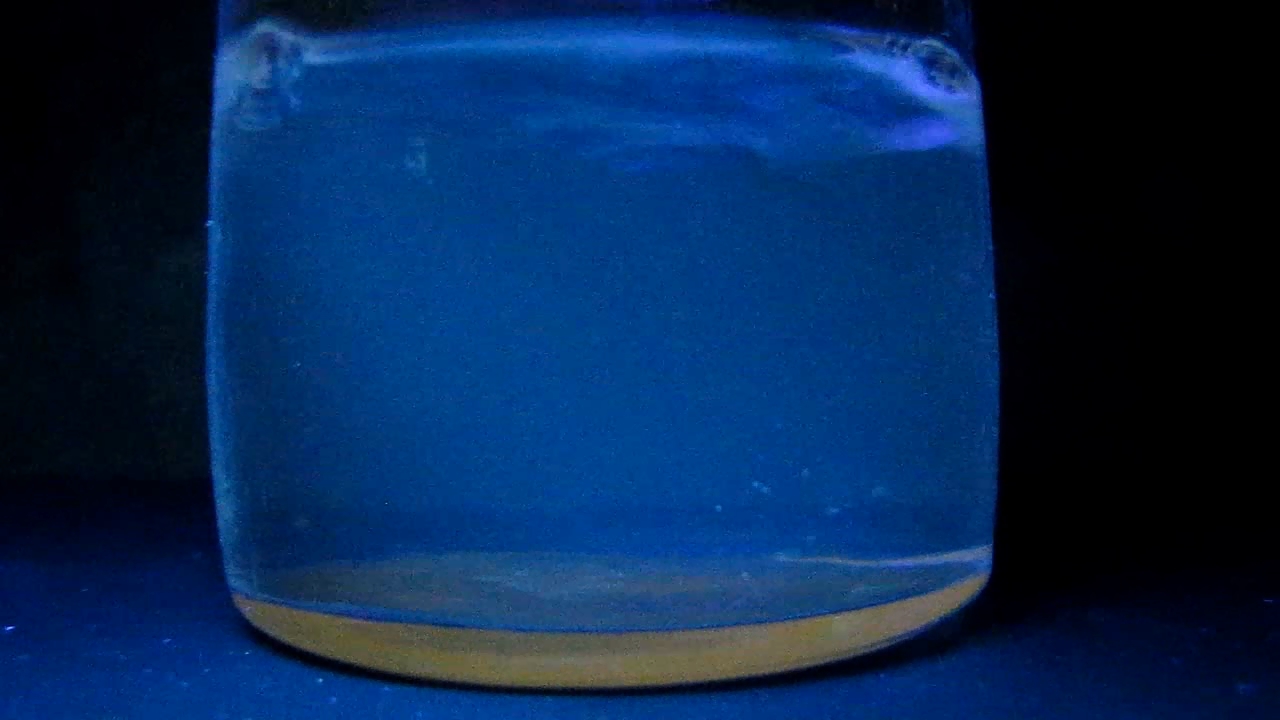
|

|
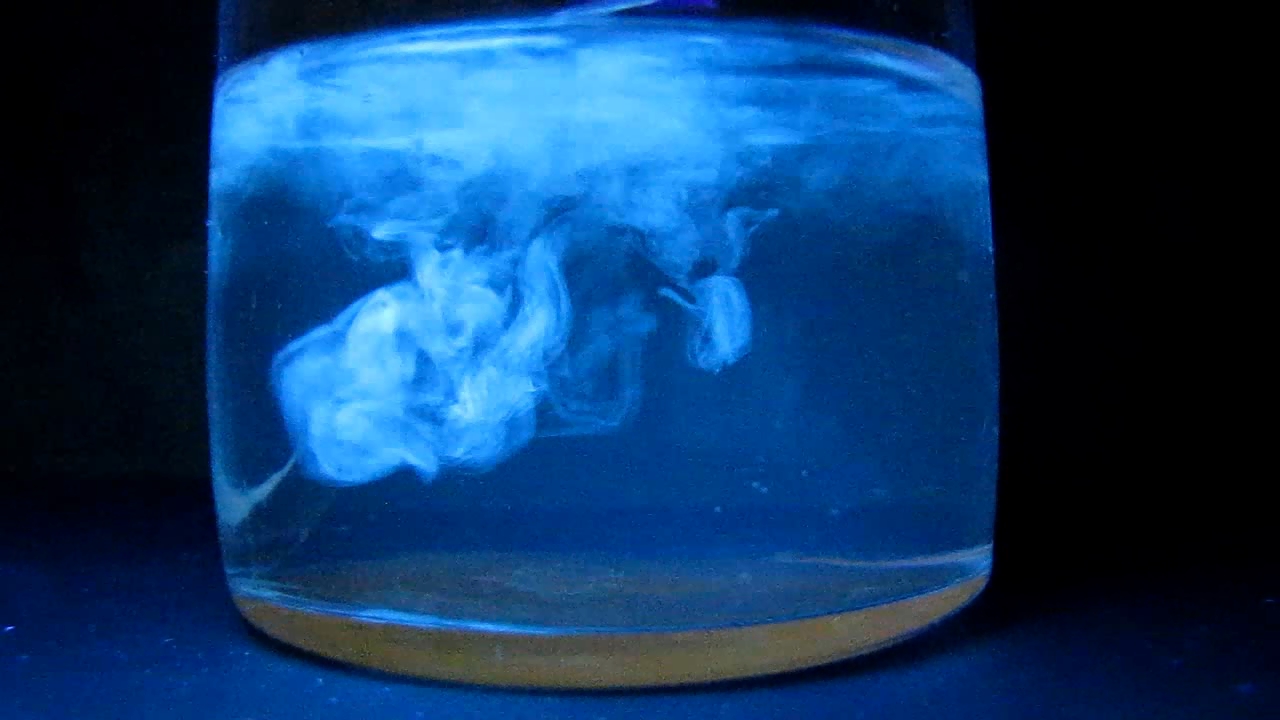
|
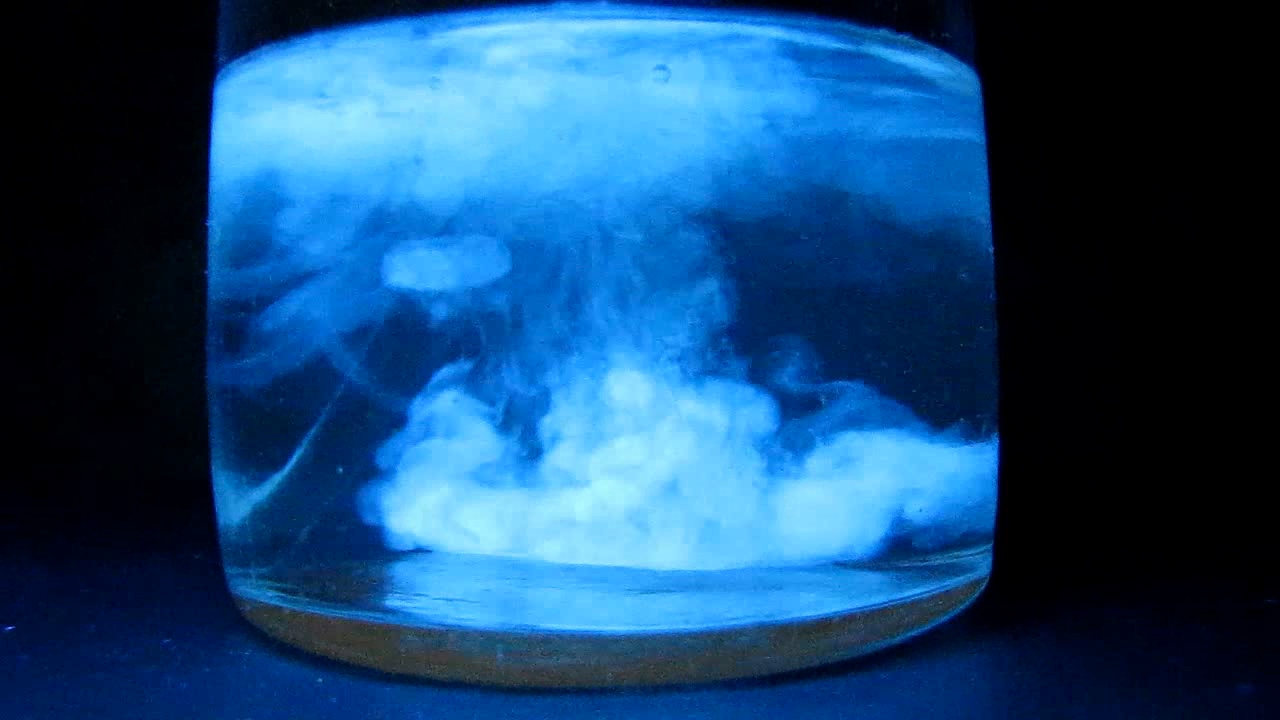
|
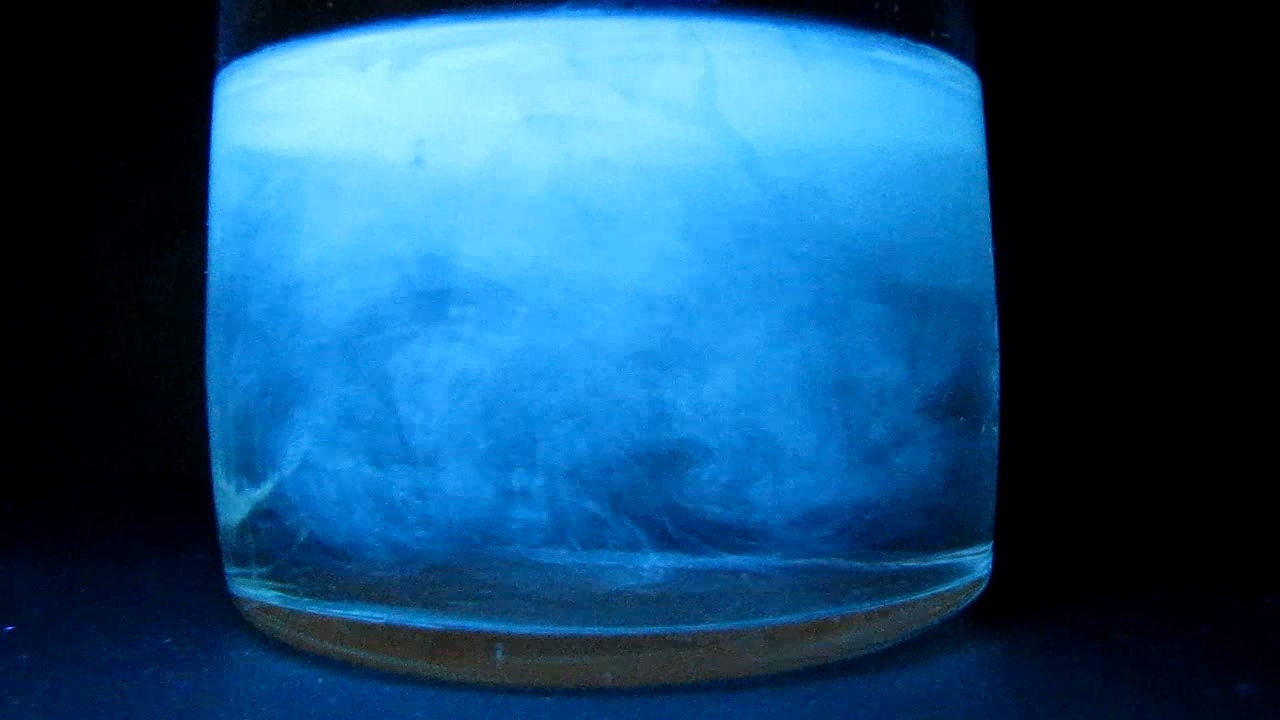
|
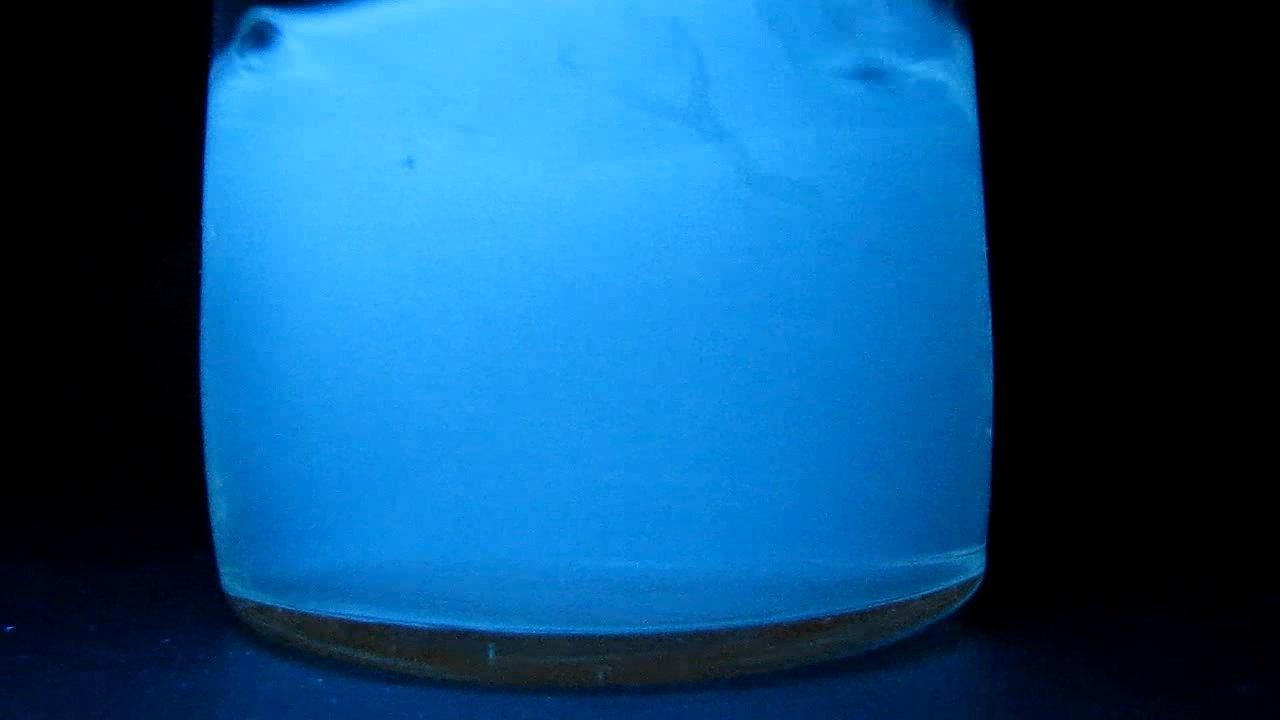
|

|

|
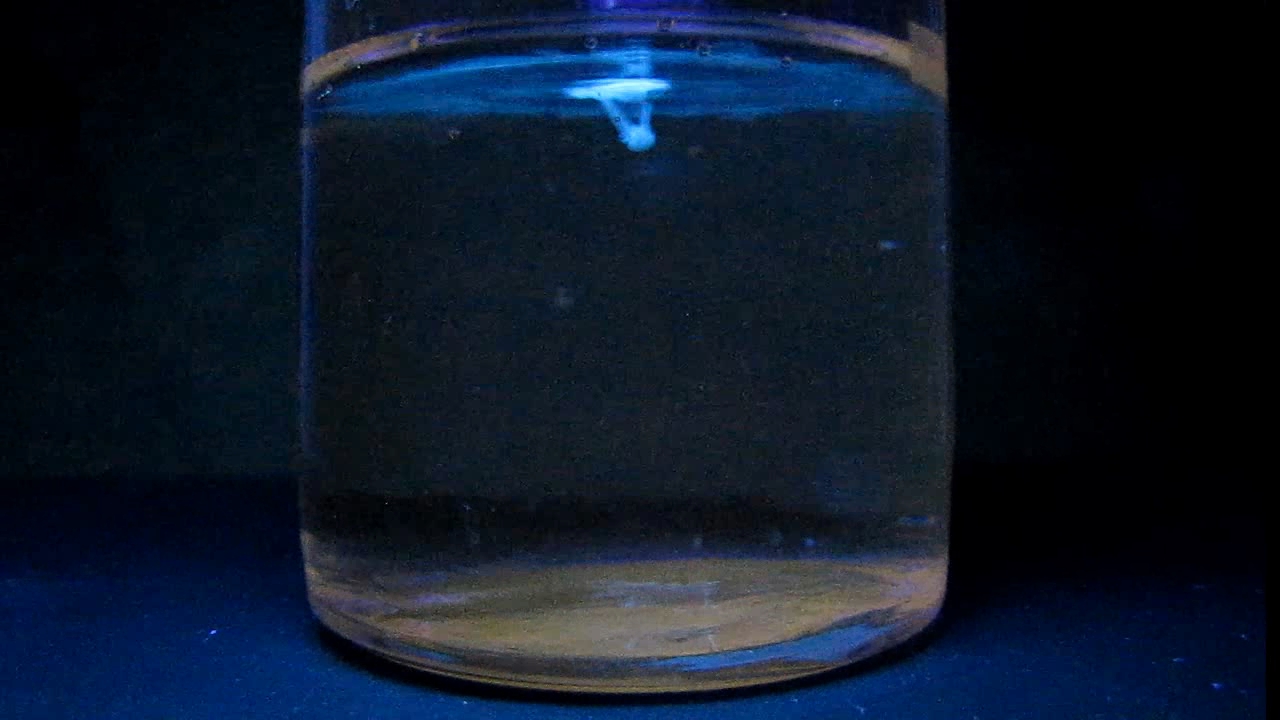
|

|

|
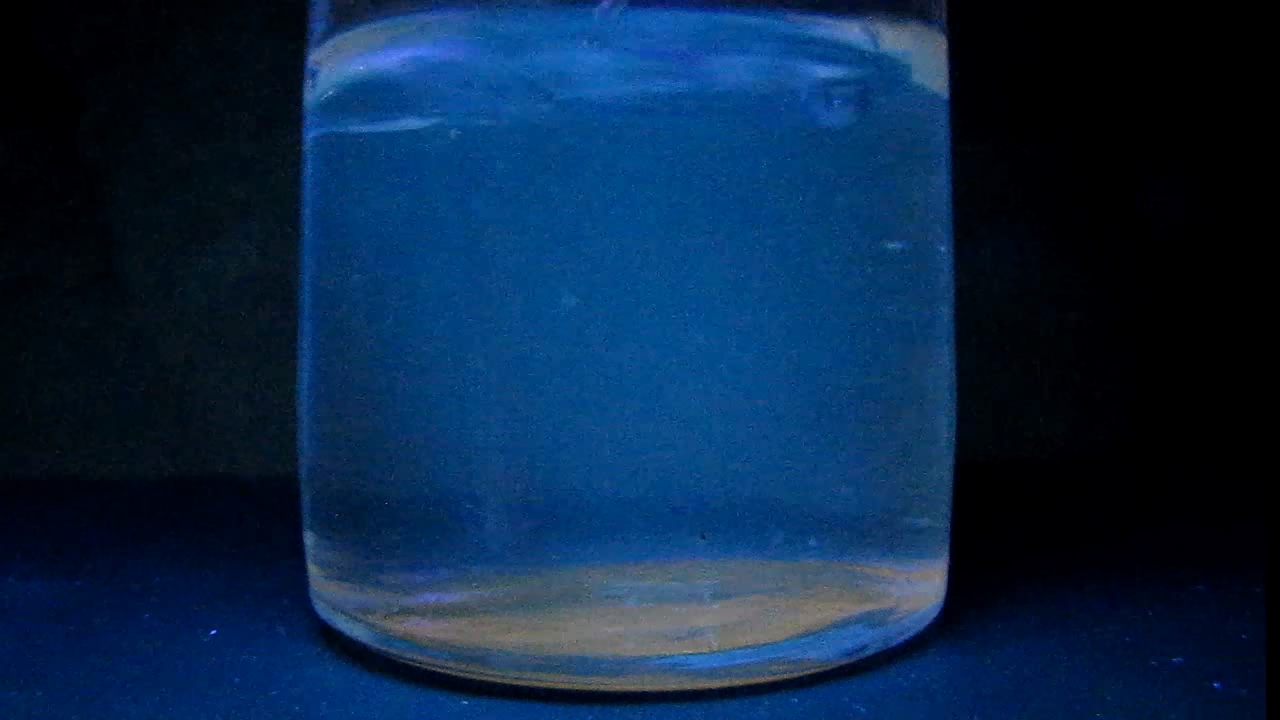
|

|
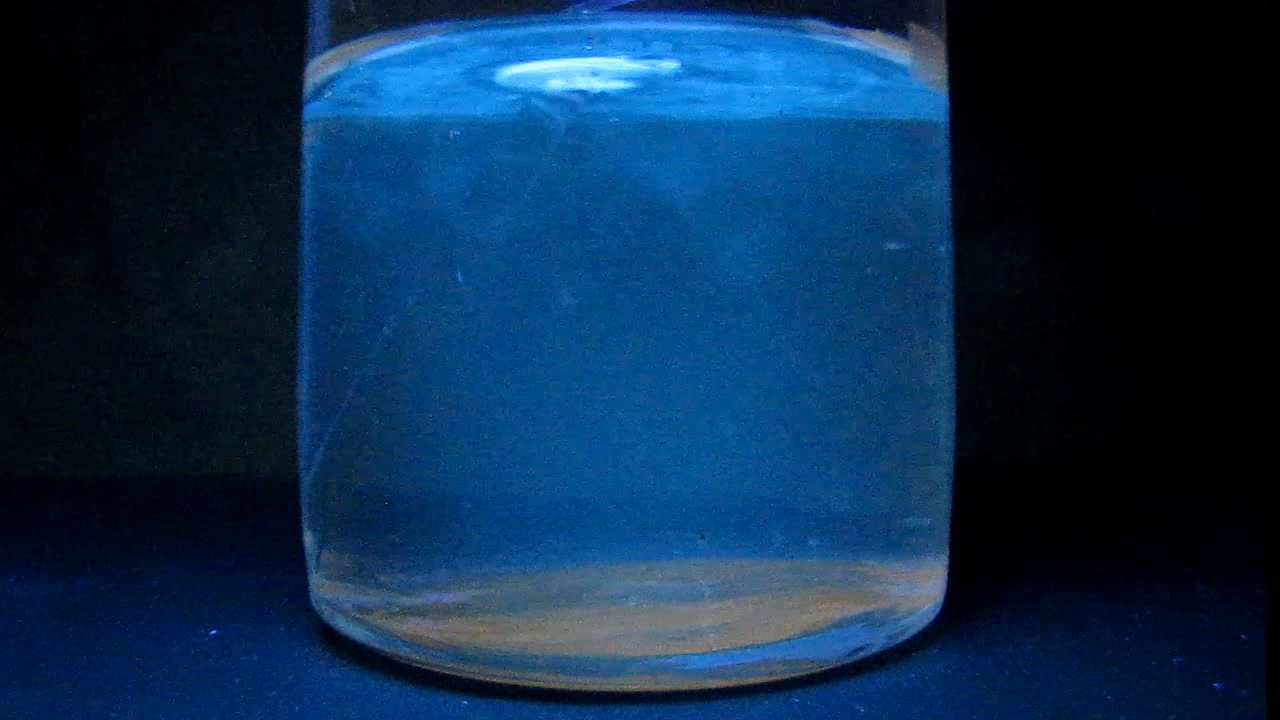
|
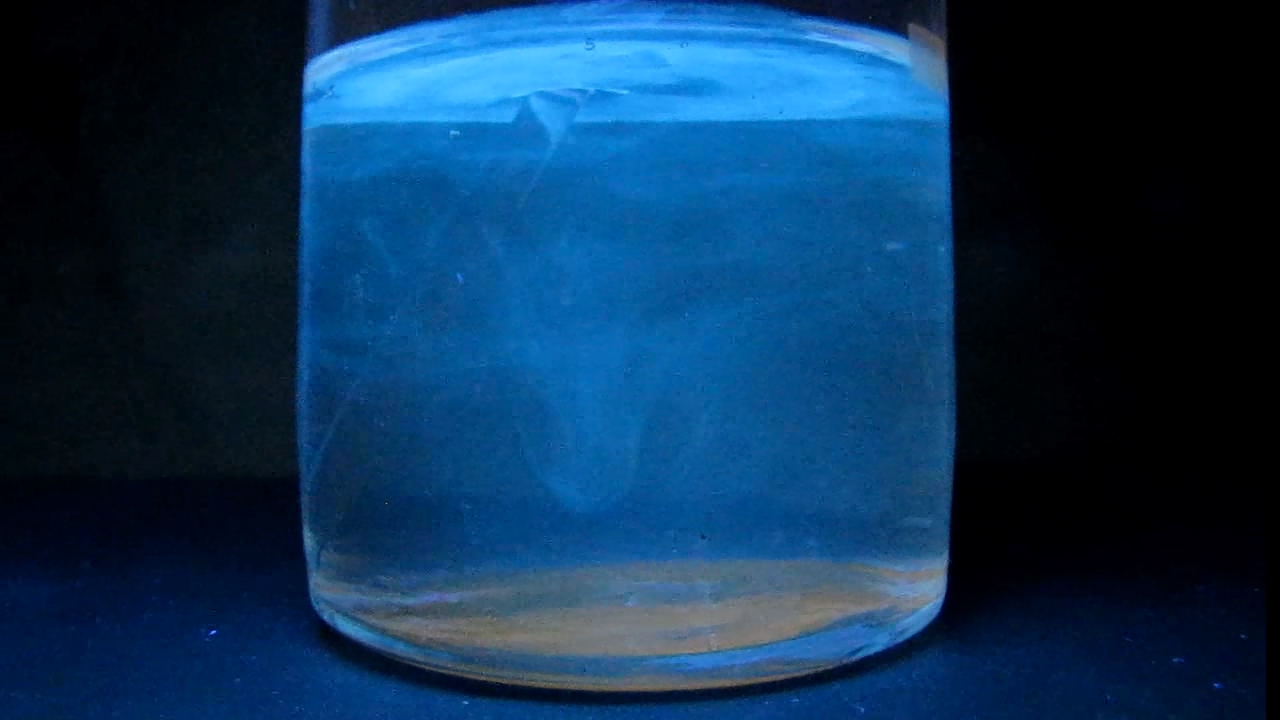
|
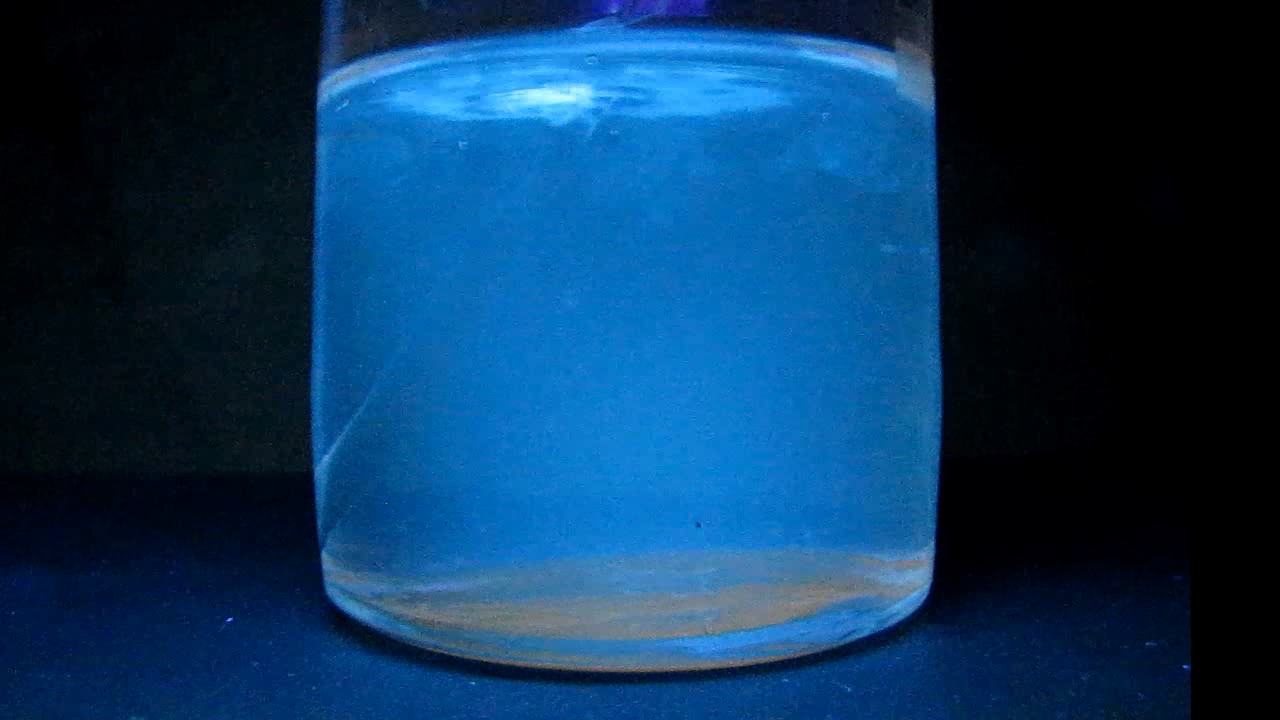
|

|
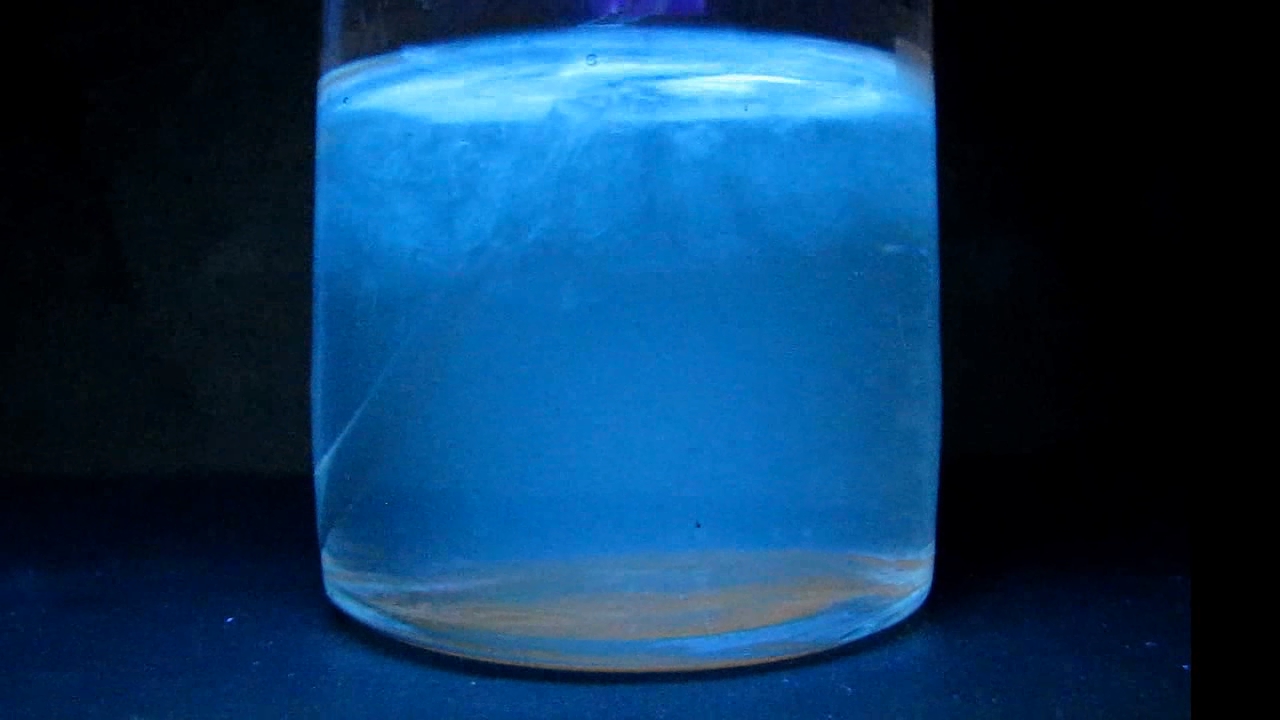
|
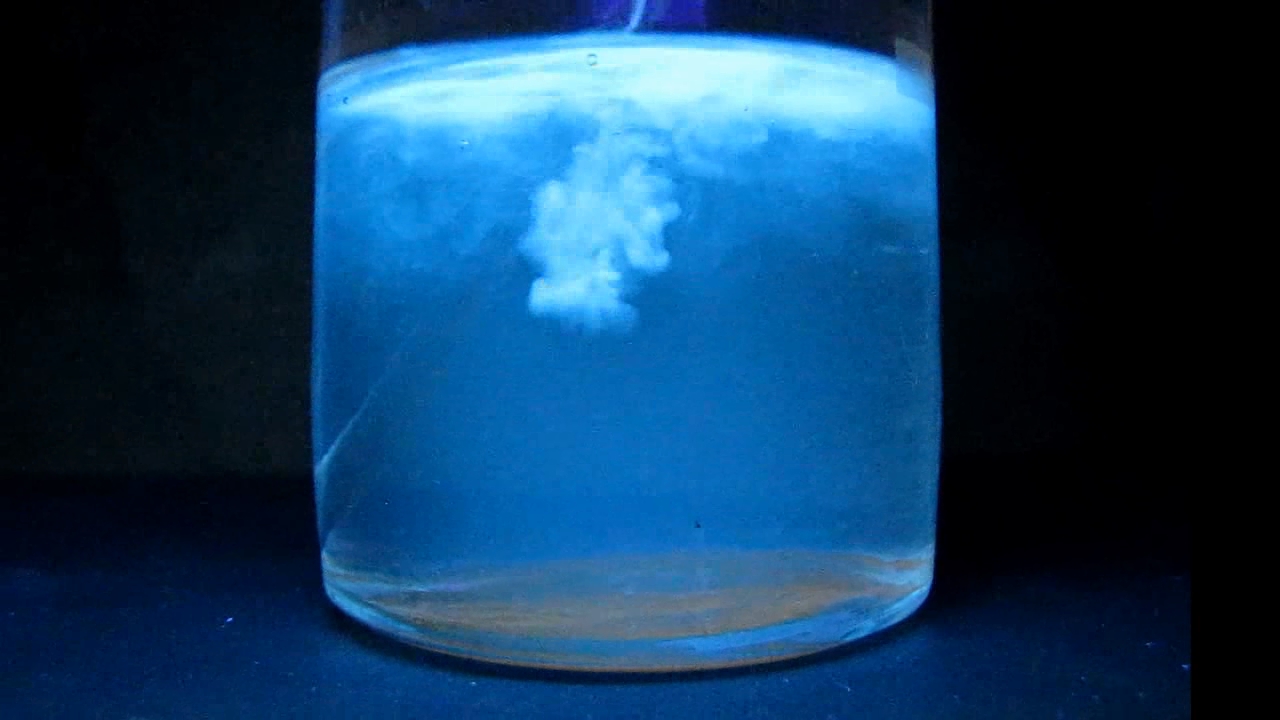
|

|

|
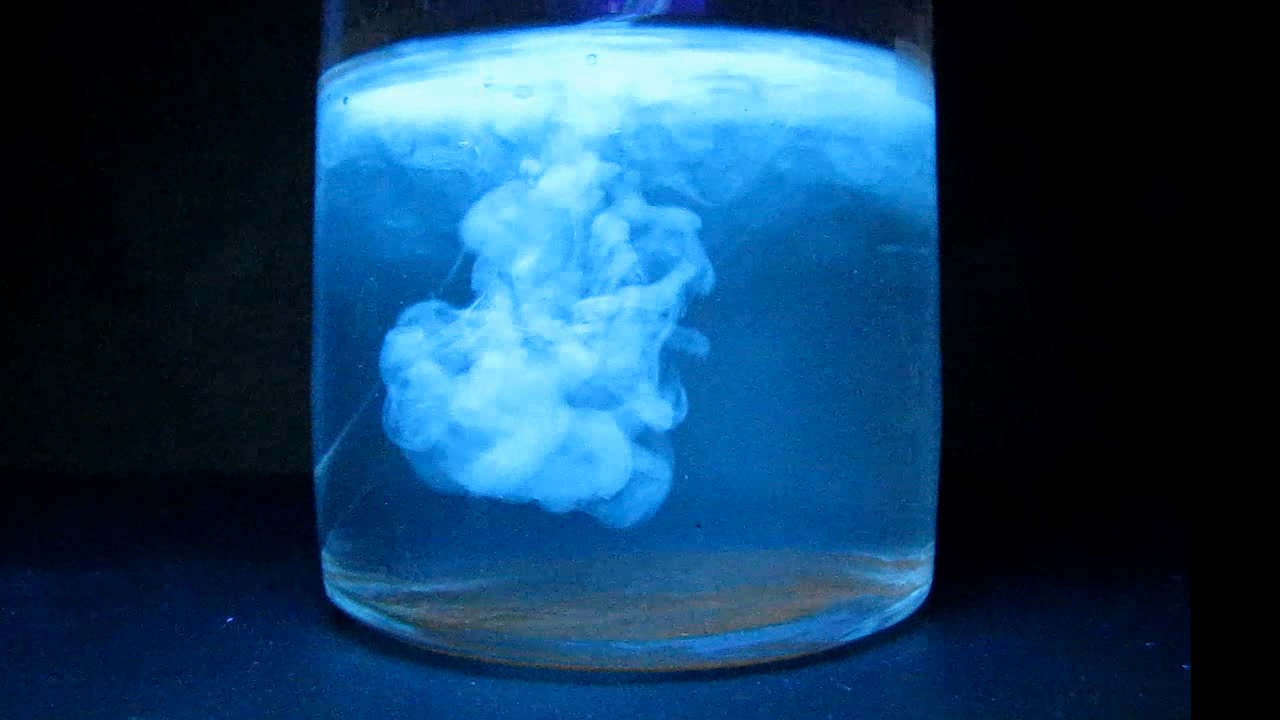
|
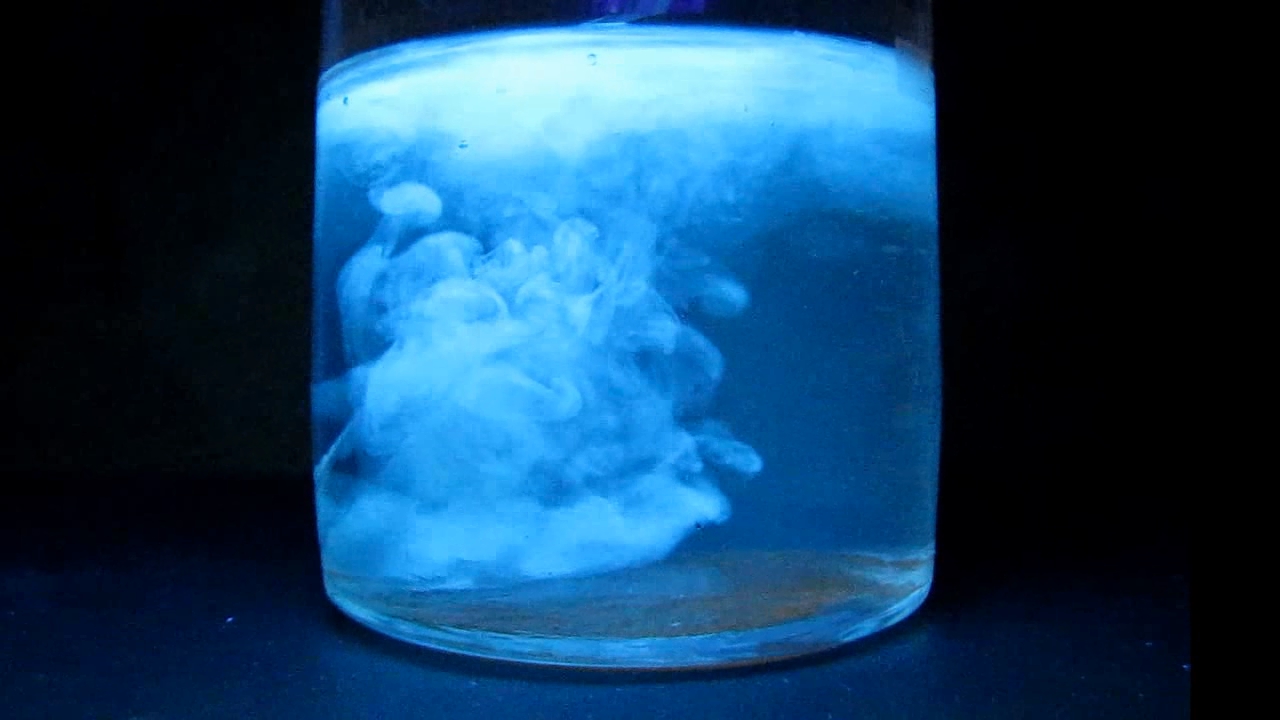
|
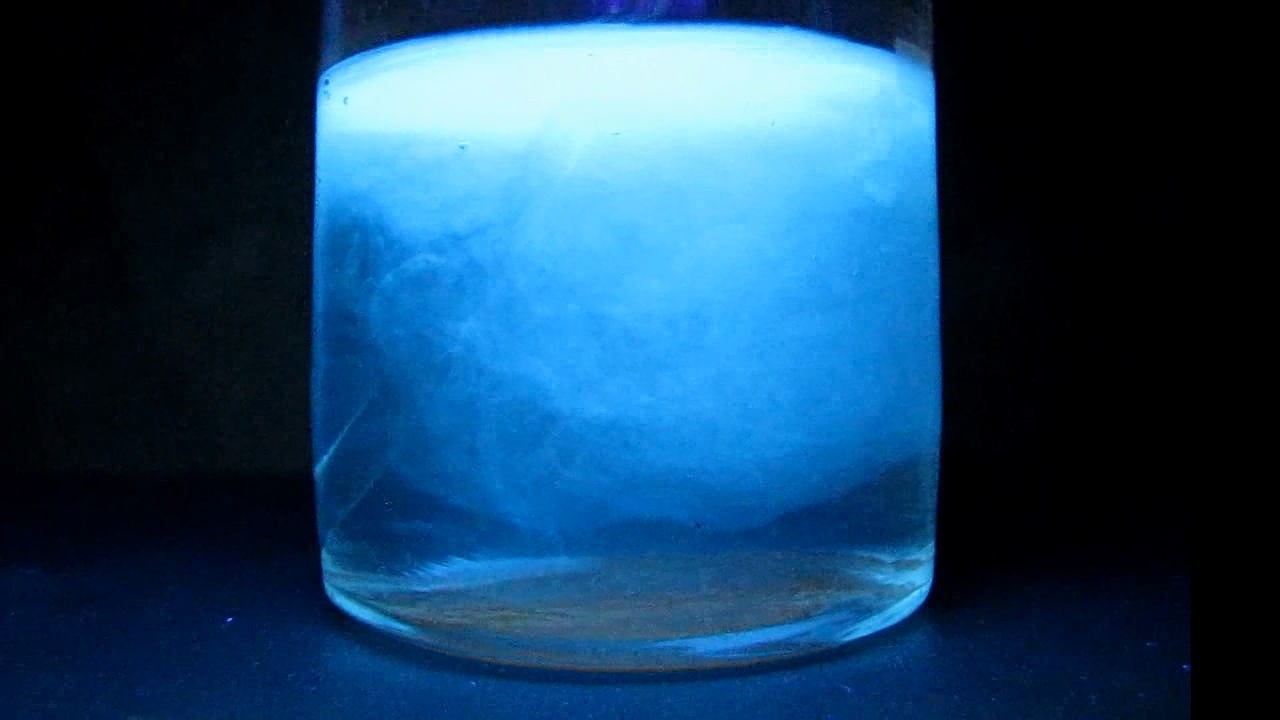
|
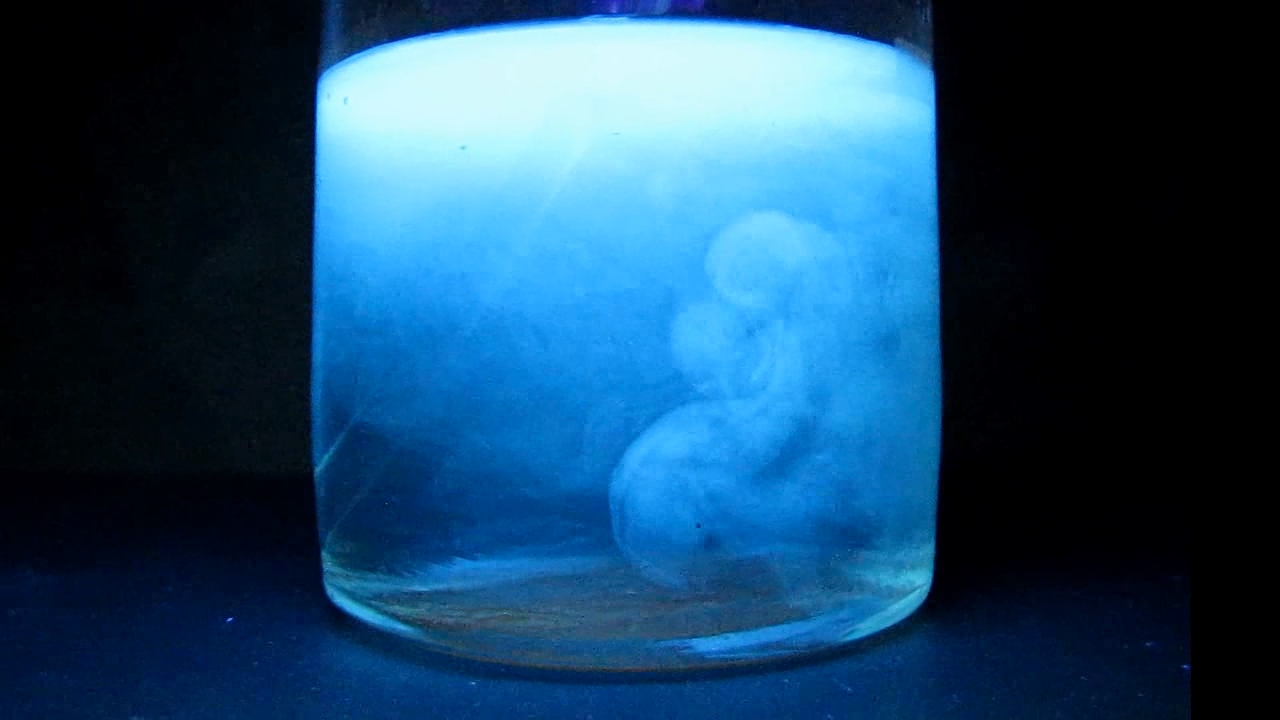
|

|

|
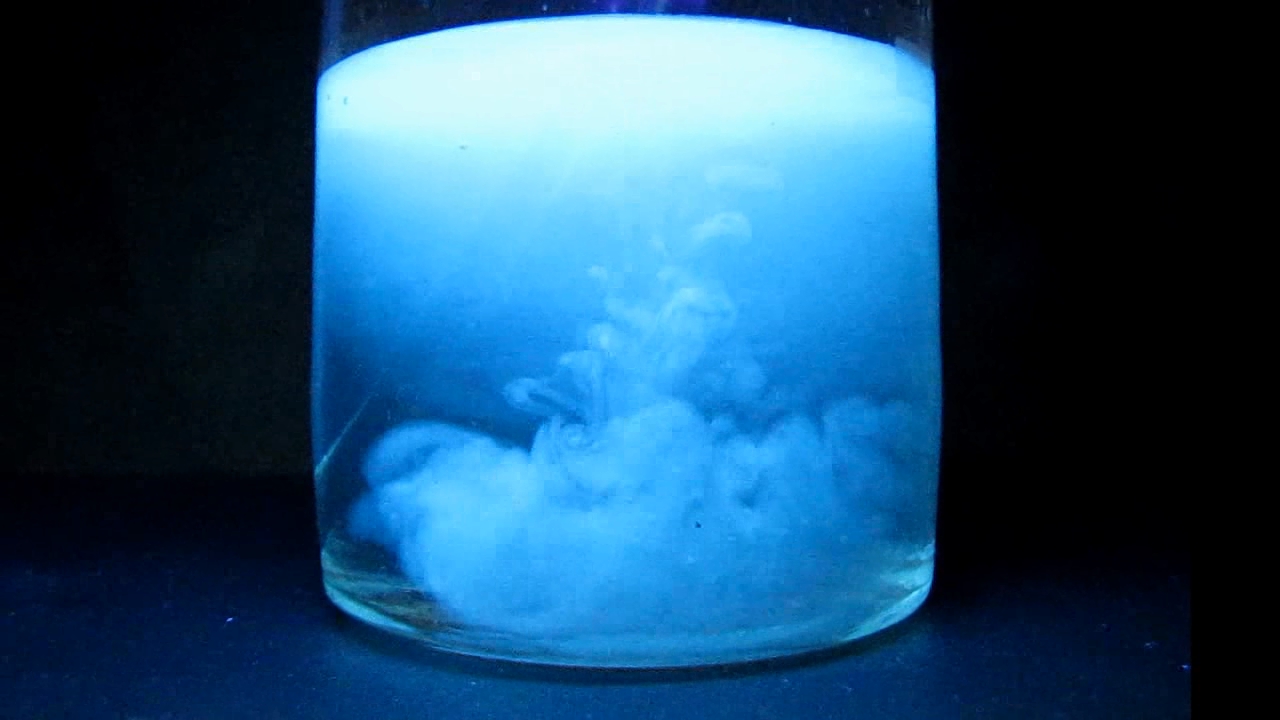
|
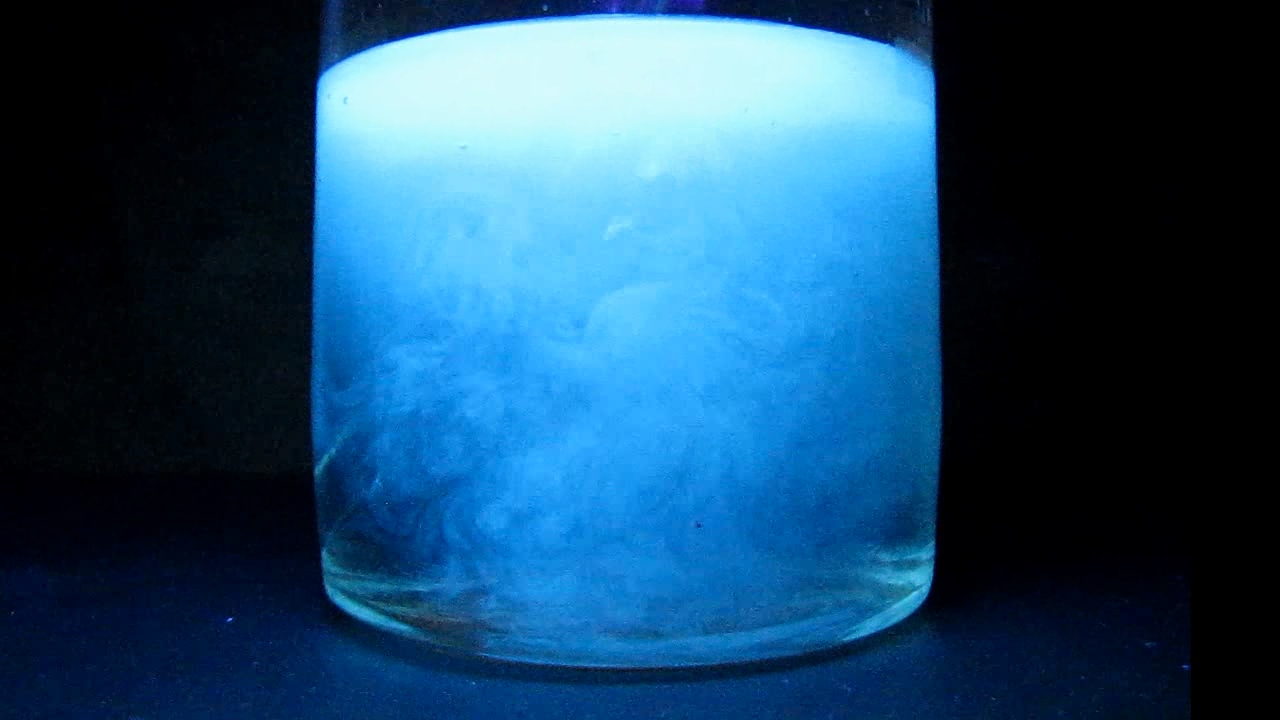
|

|
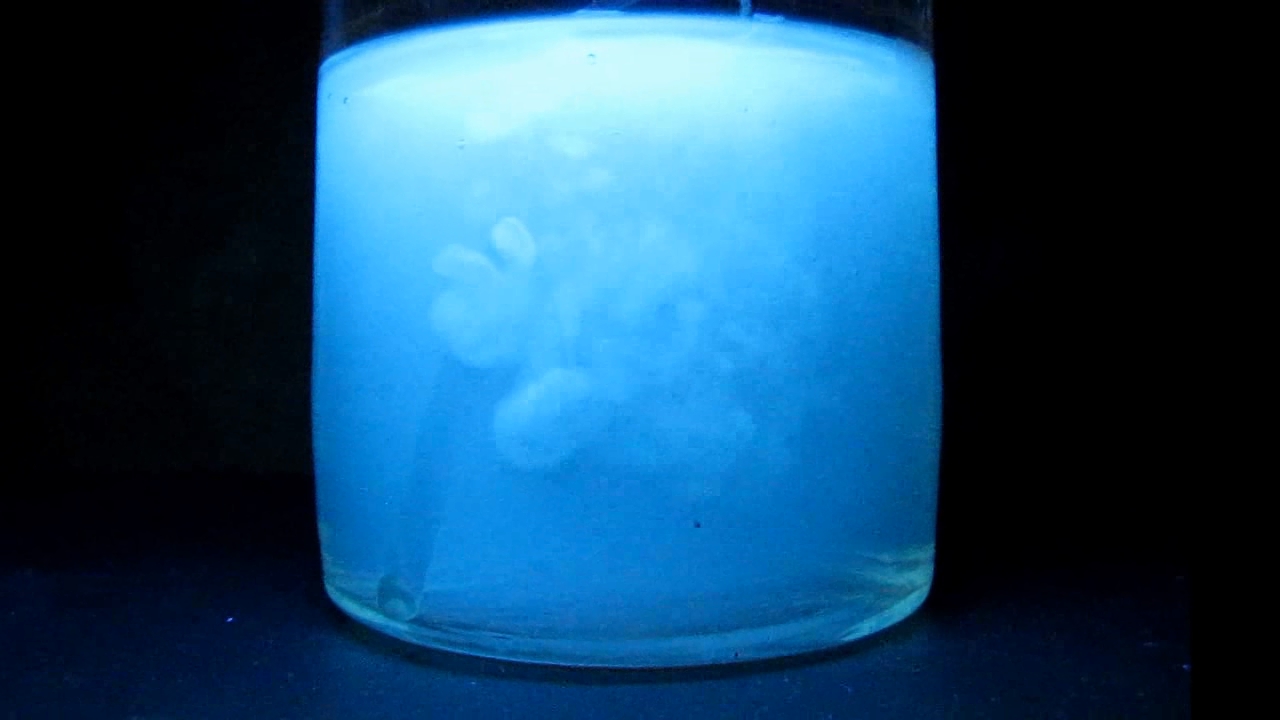
|

|

|
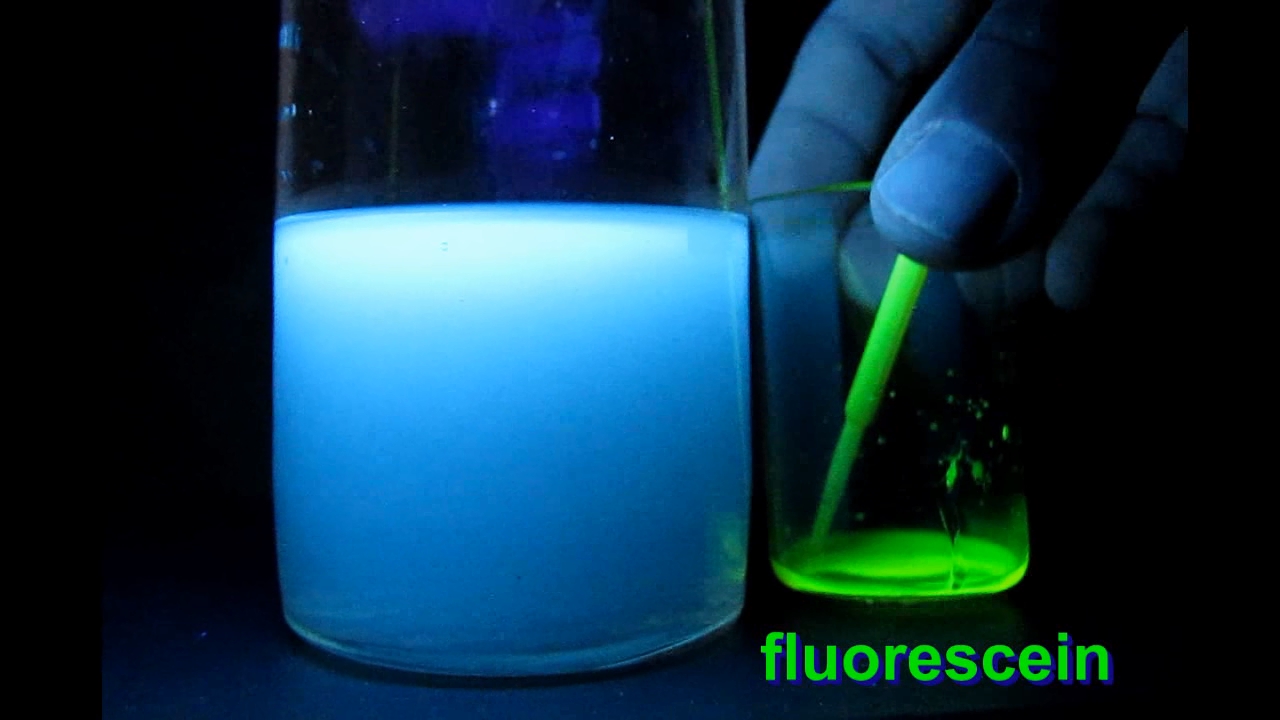
|
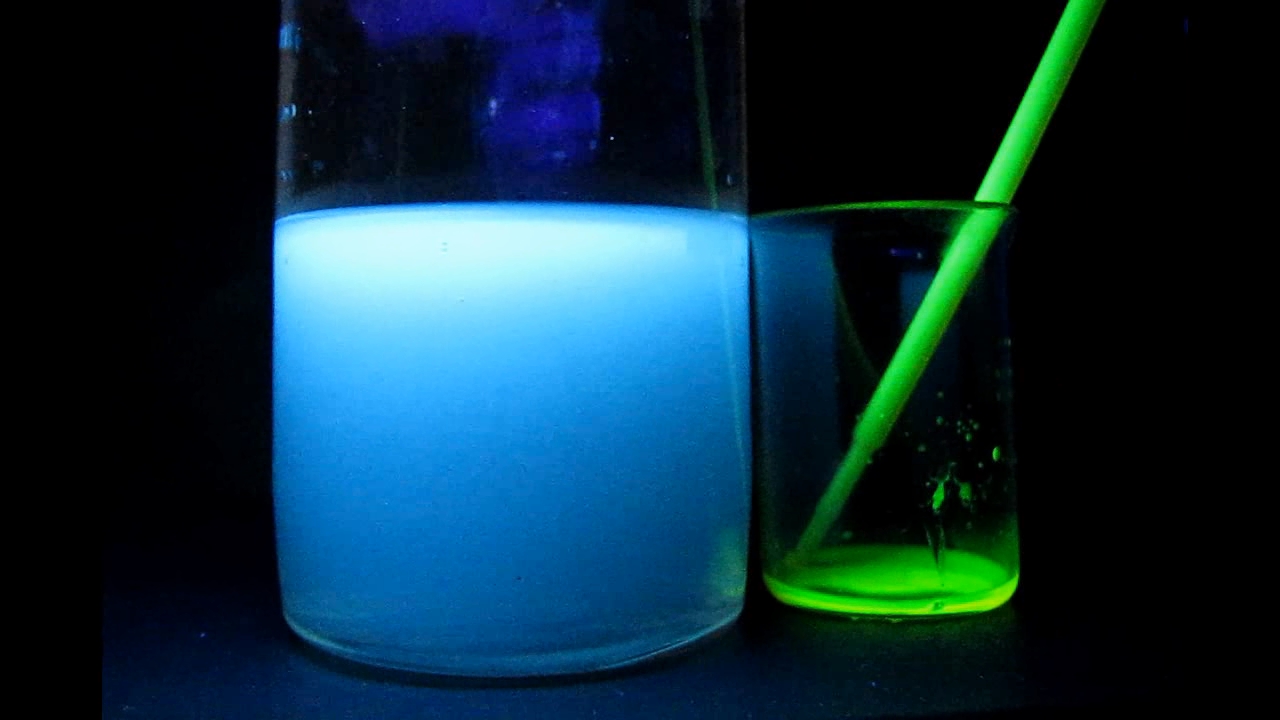
|

|

|
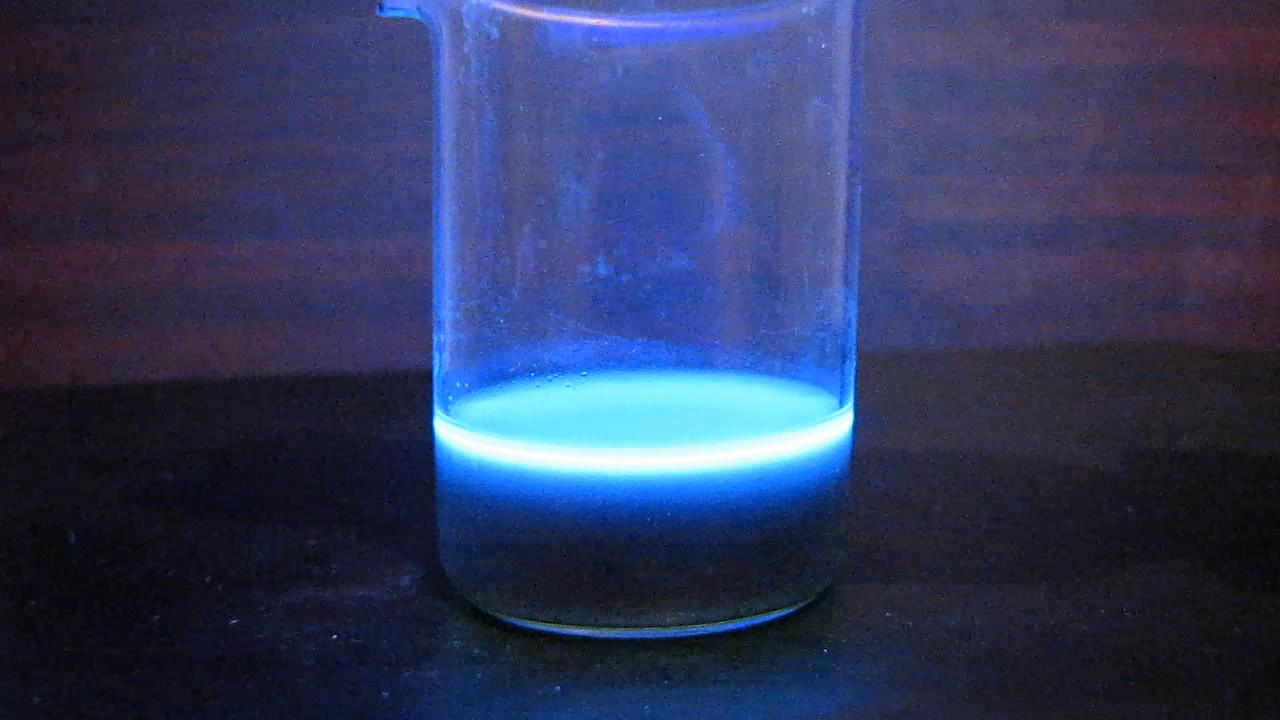
|
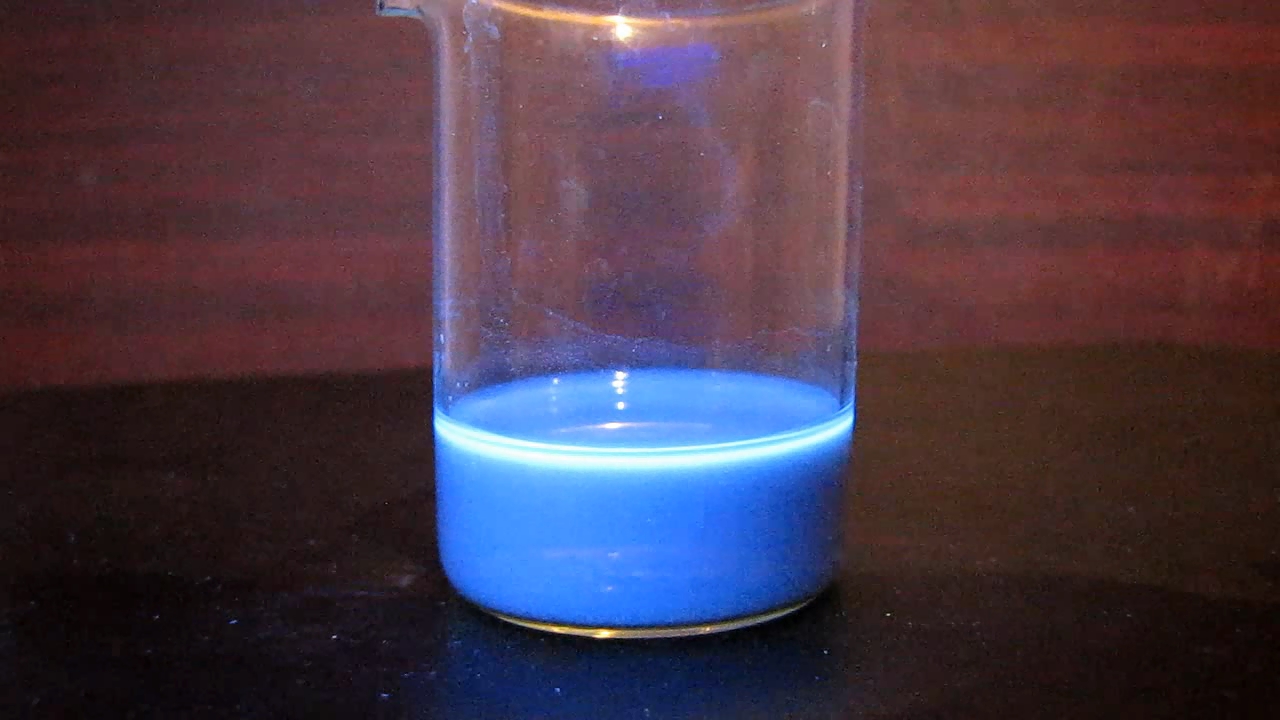
|
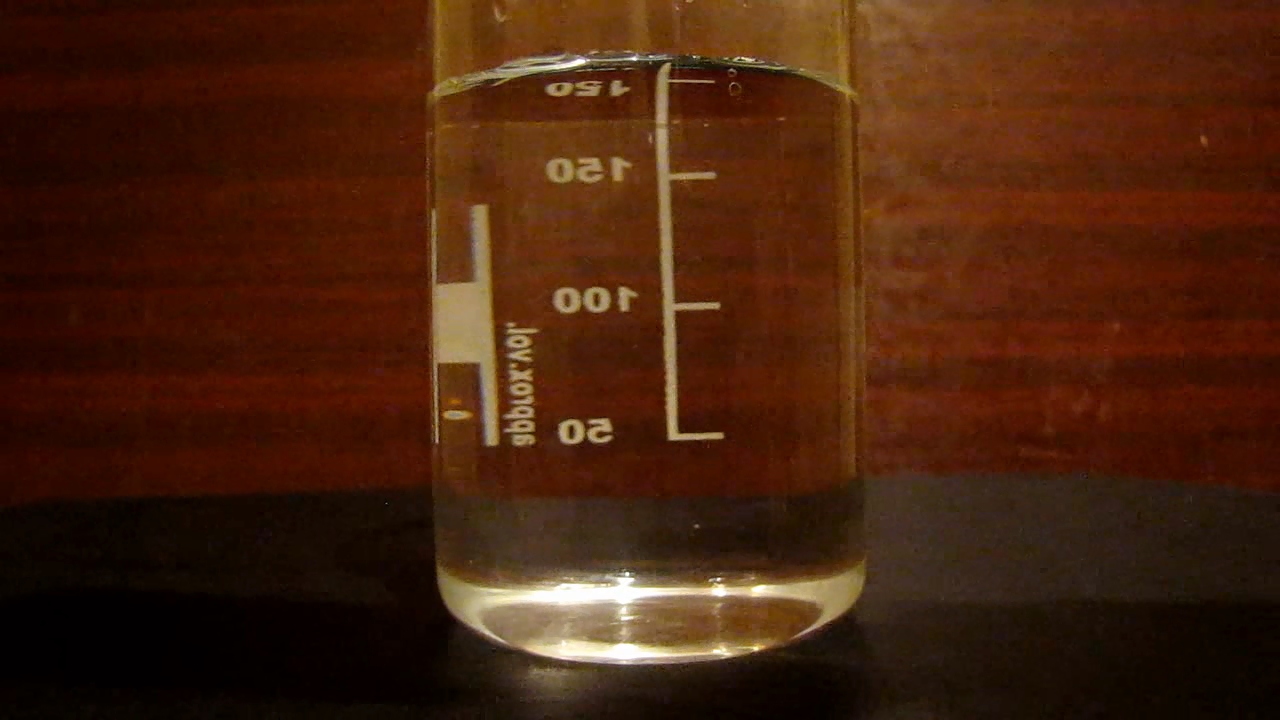
|
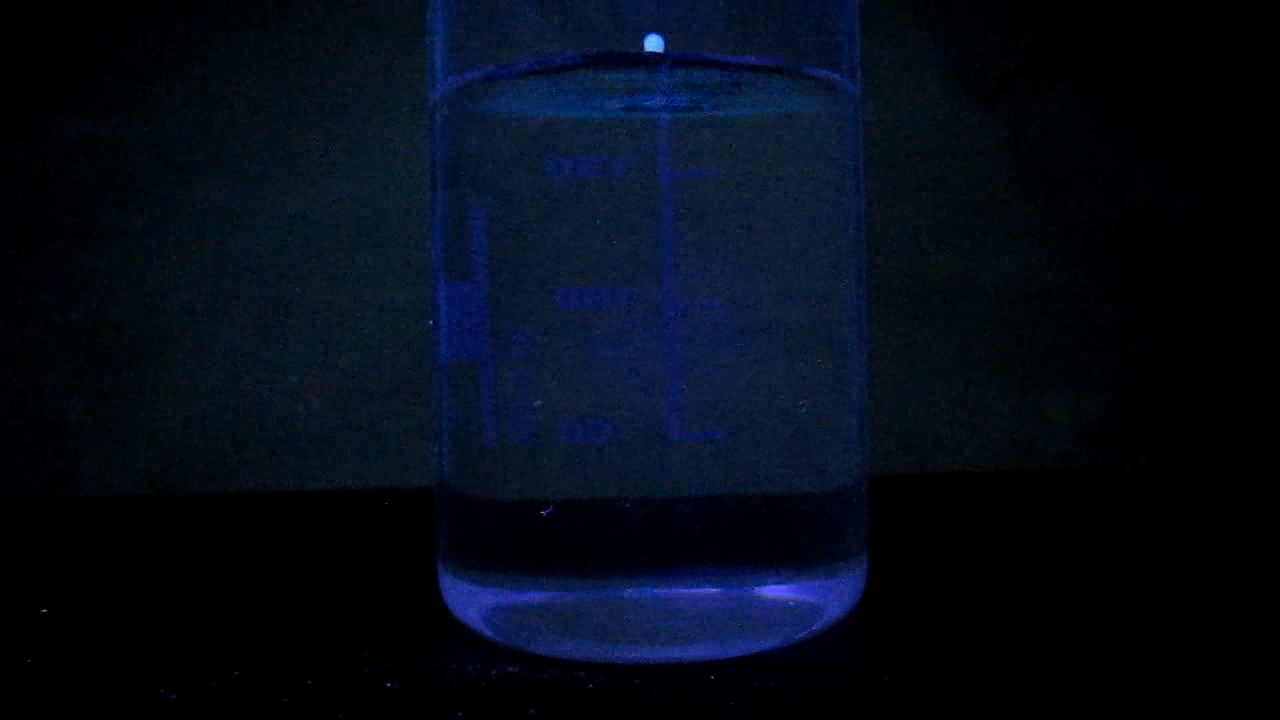
|
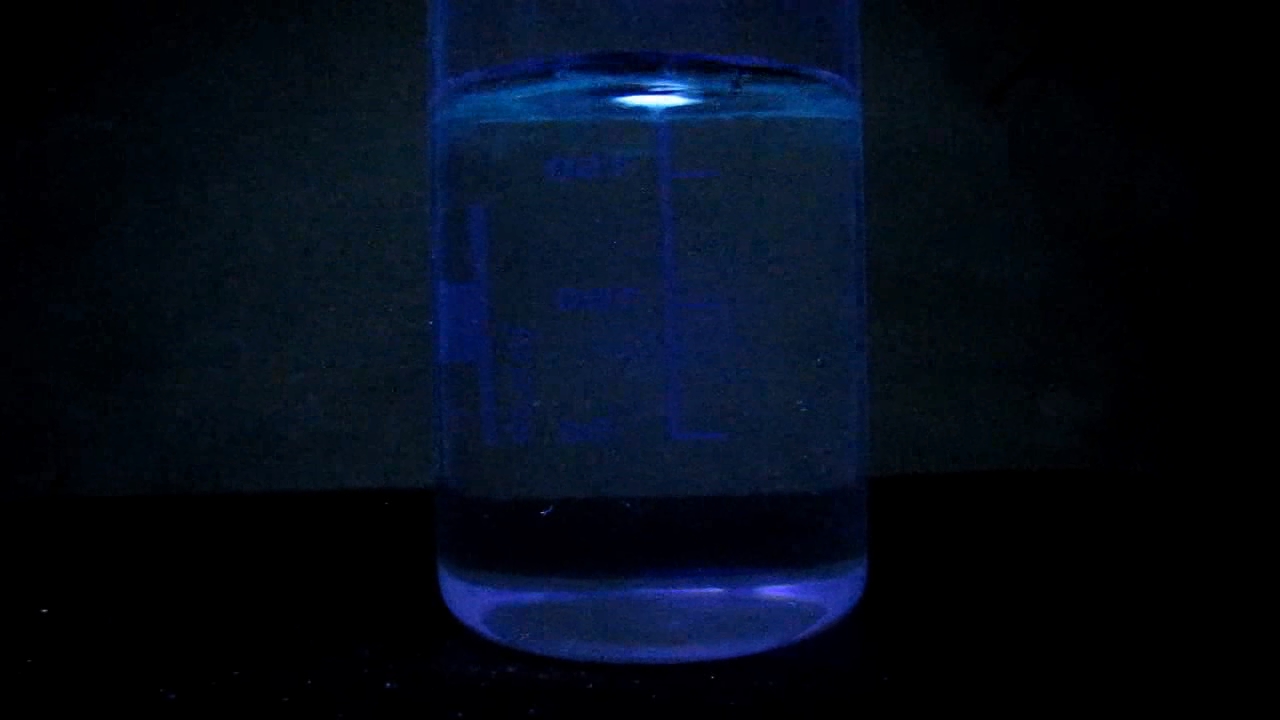
|

|

|

|

|

|

|

|
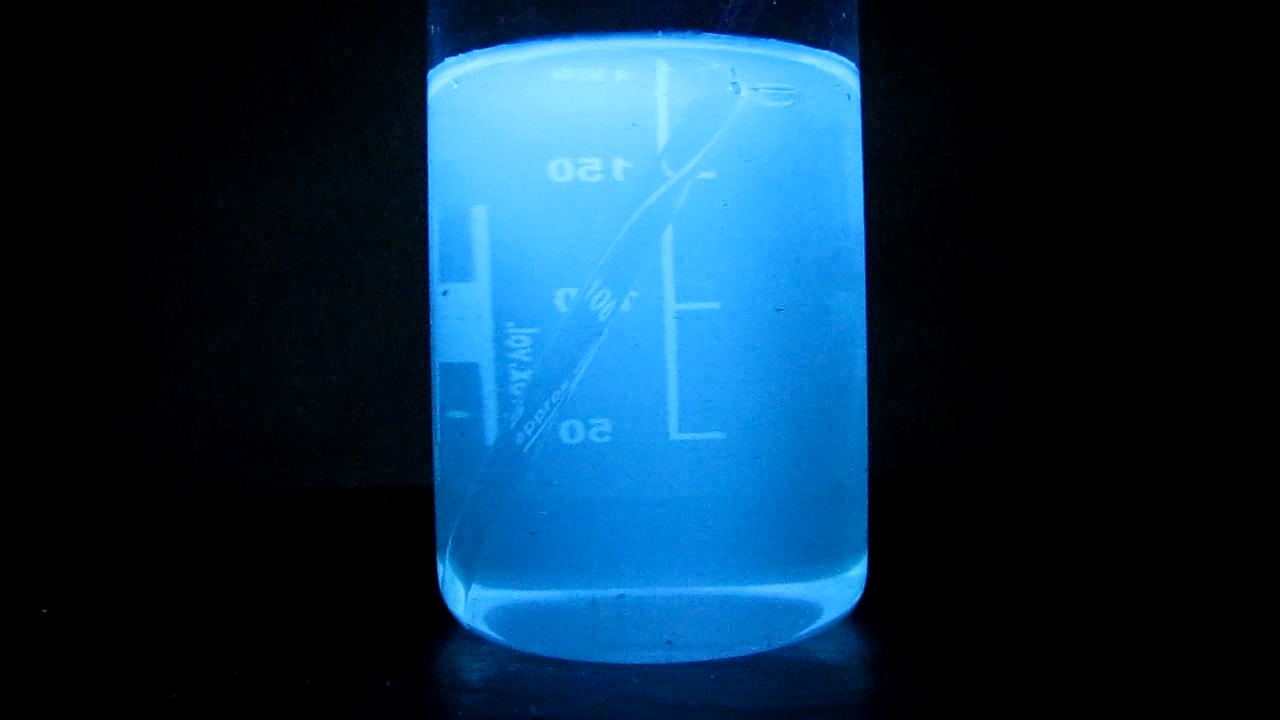
|
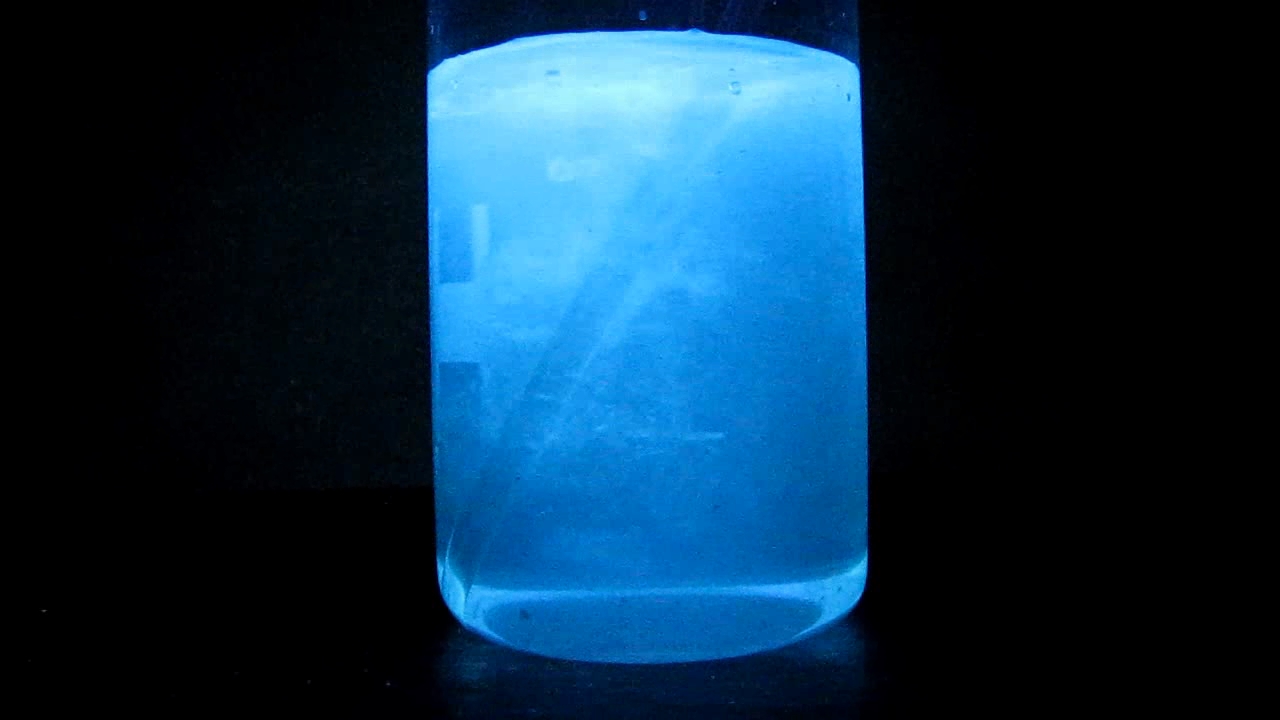
|
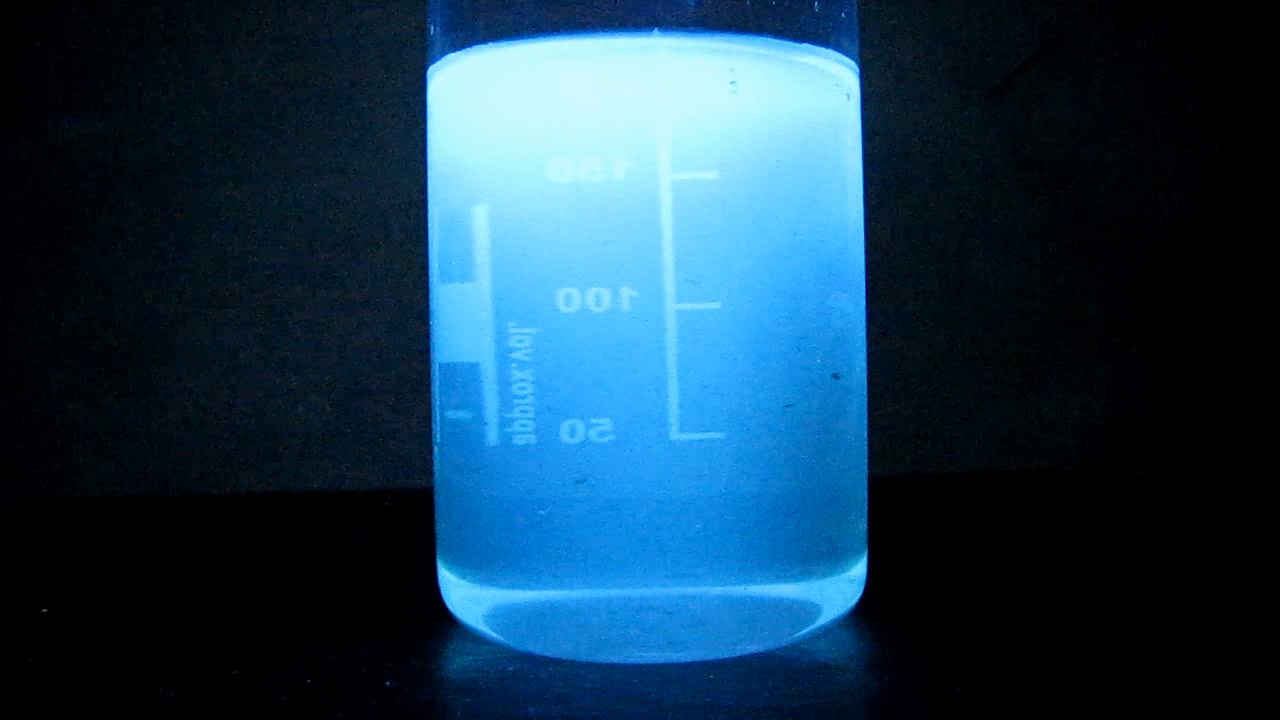
|
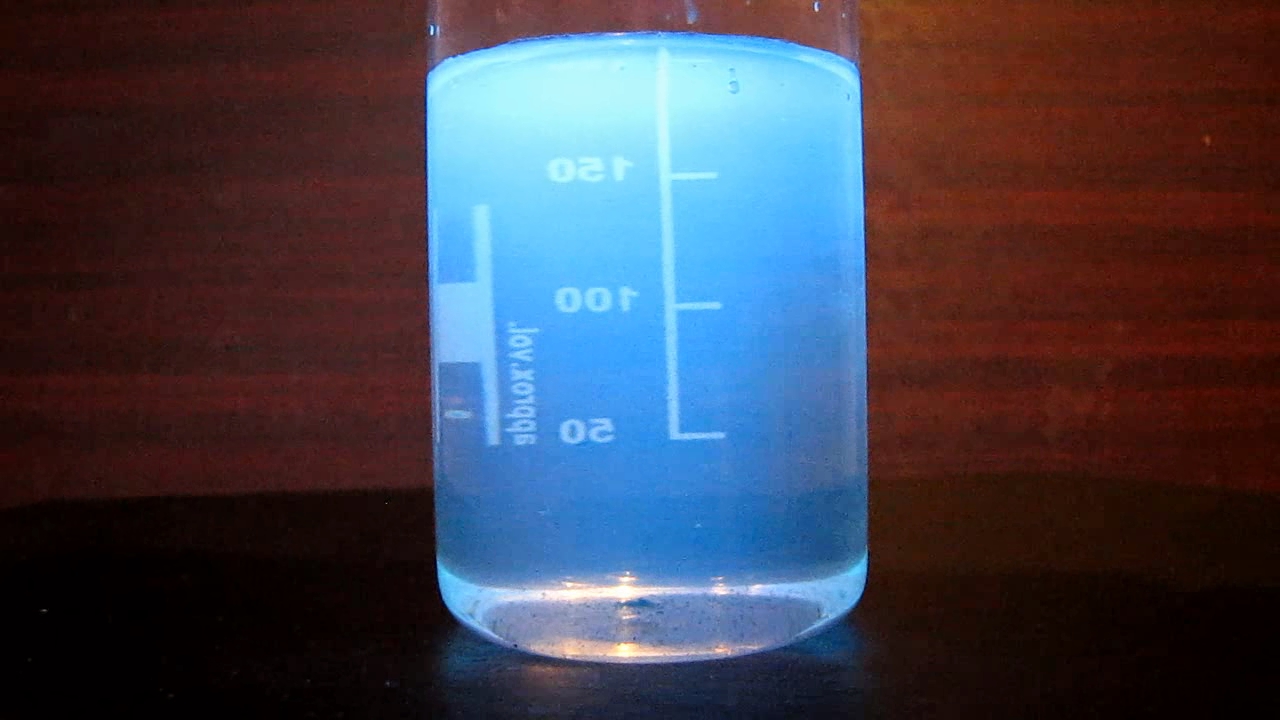
|

|
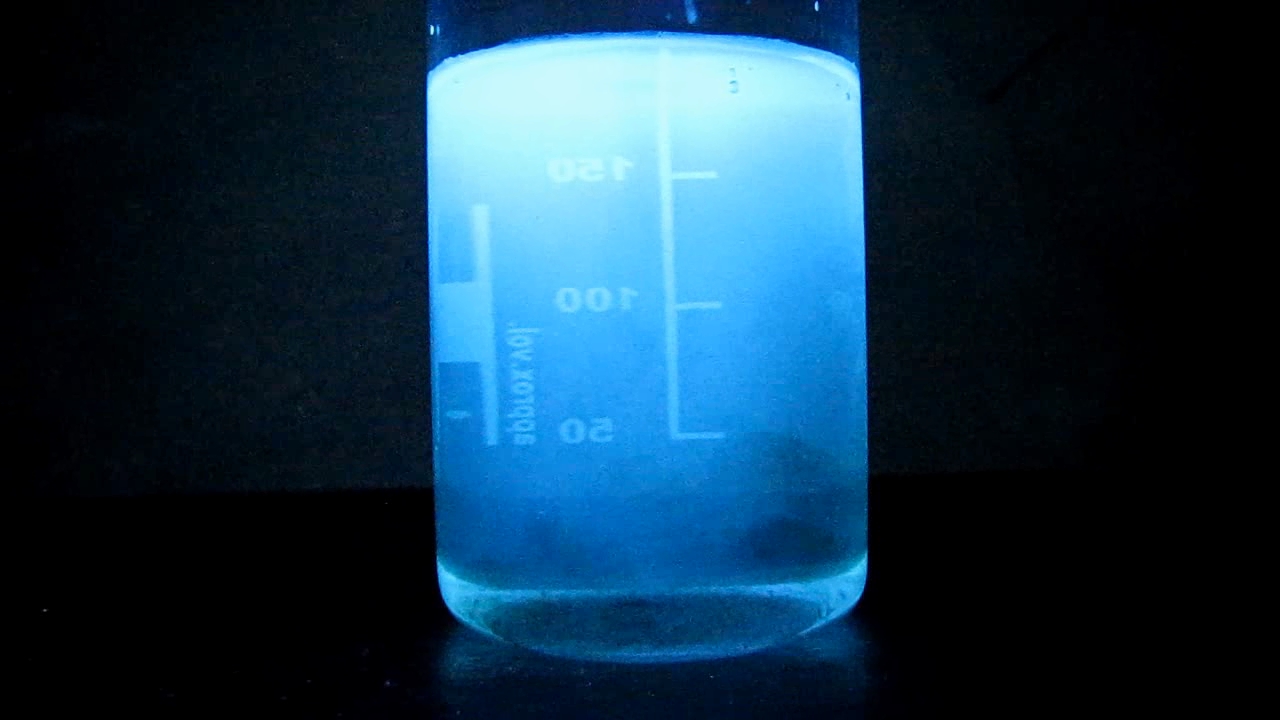
|
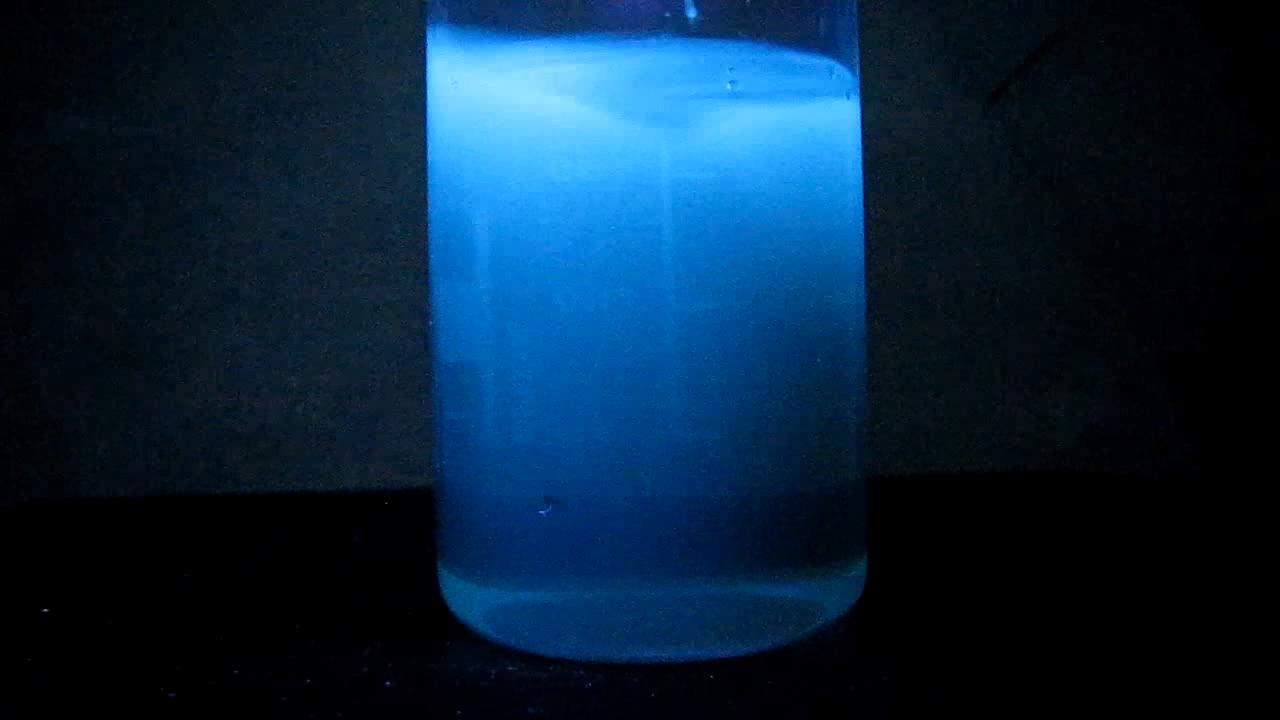
|
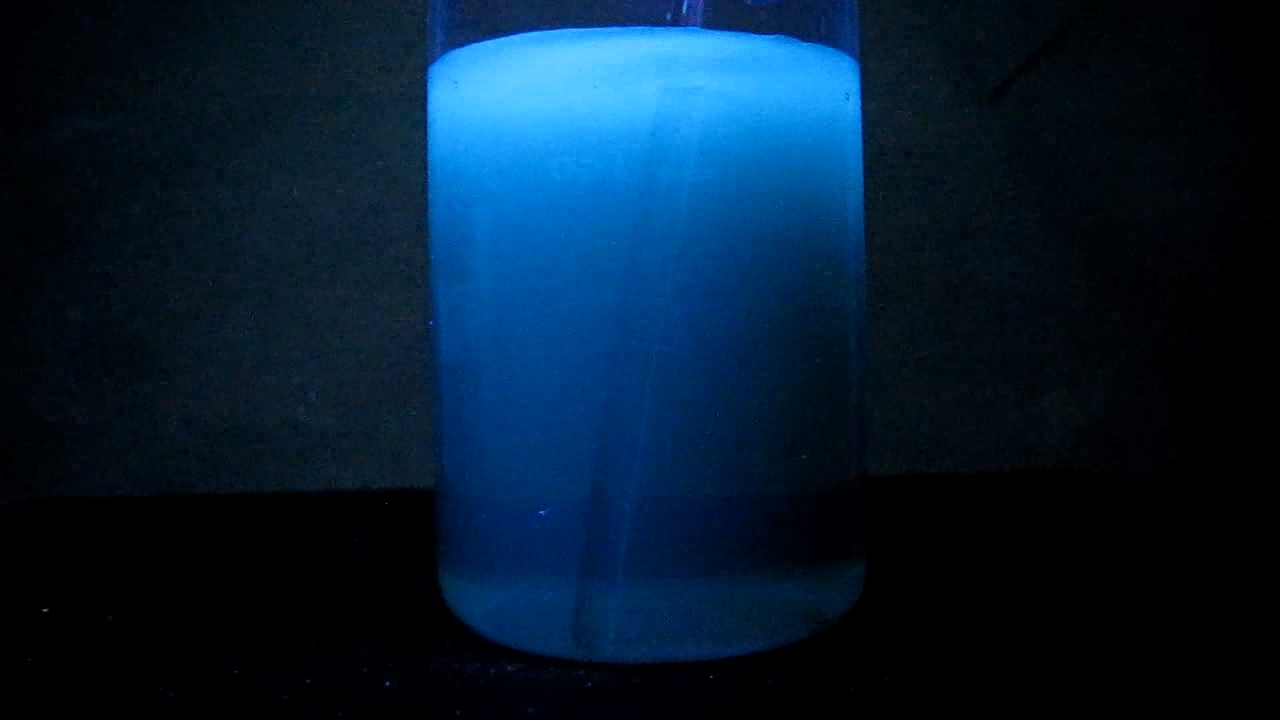
|

|
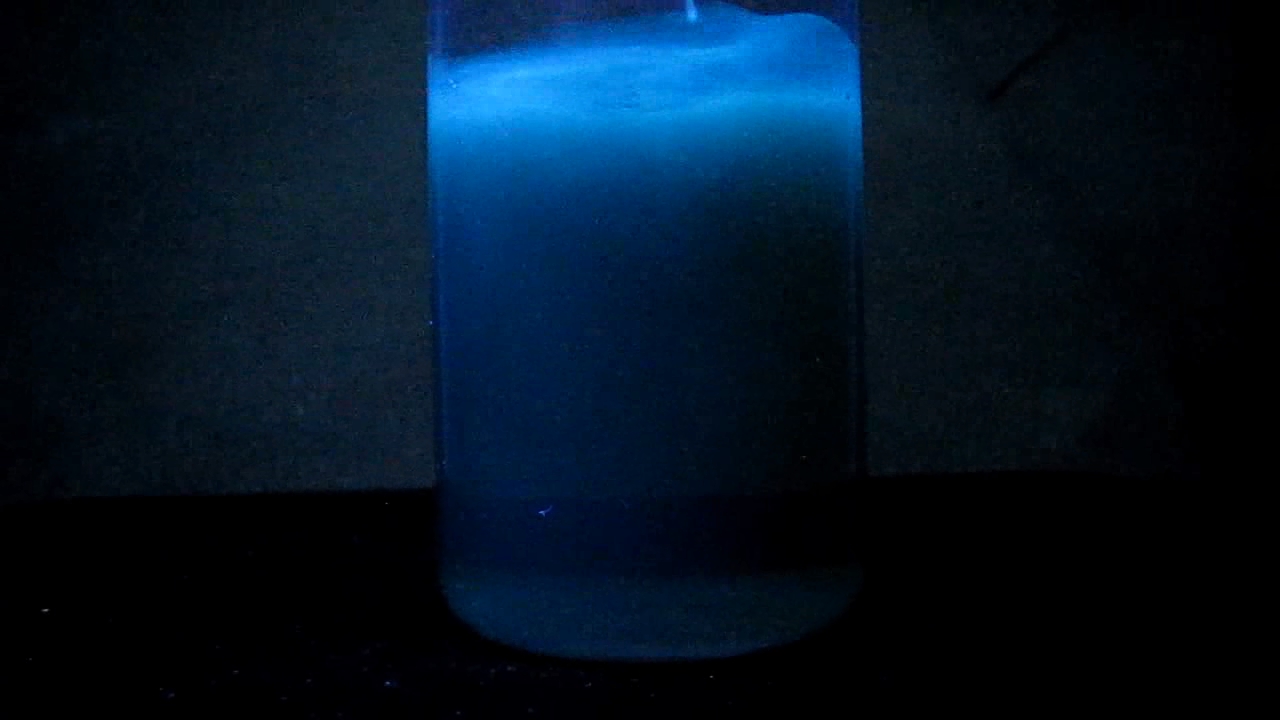
|

|

|

|
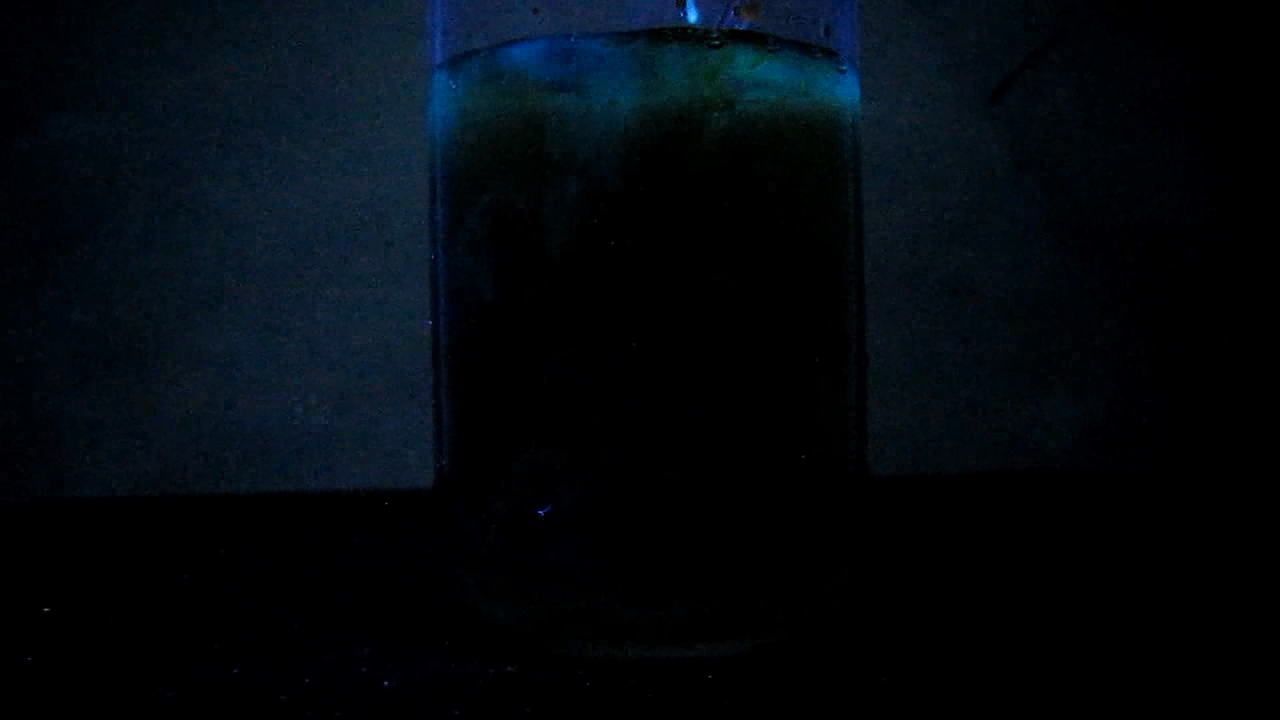
|

|
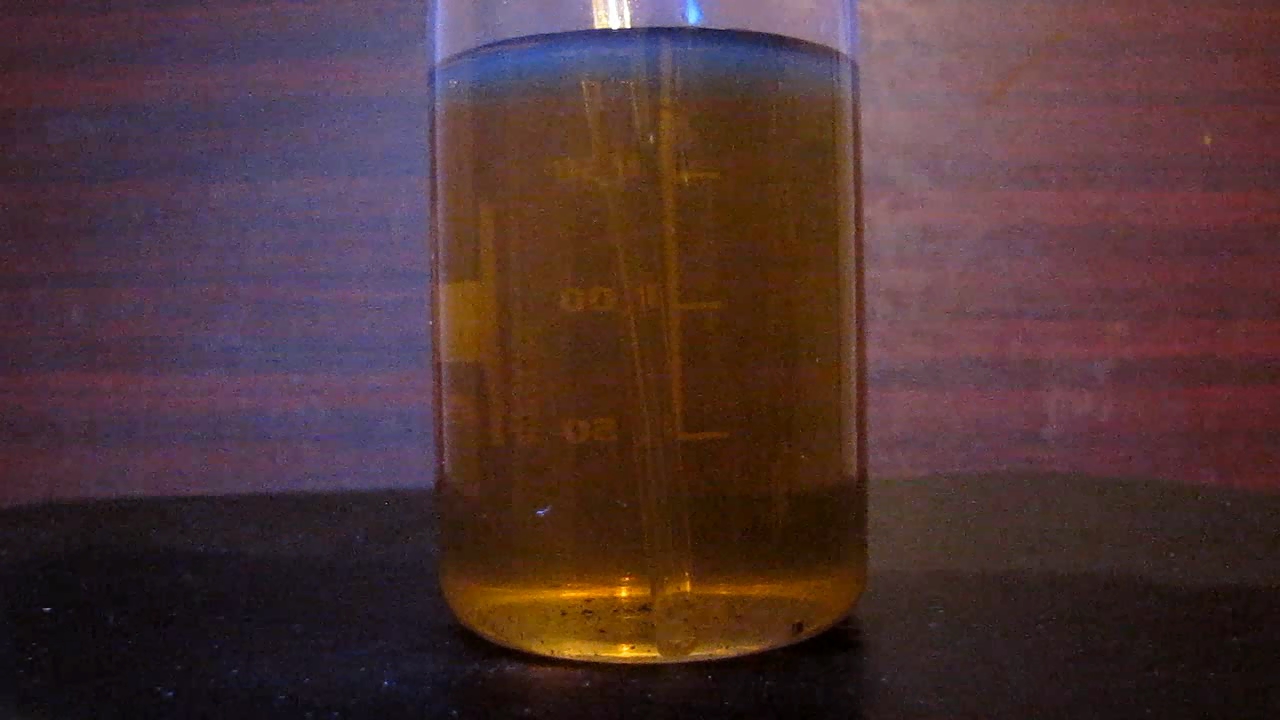
|
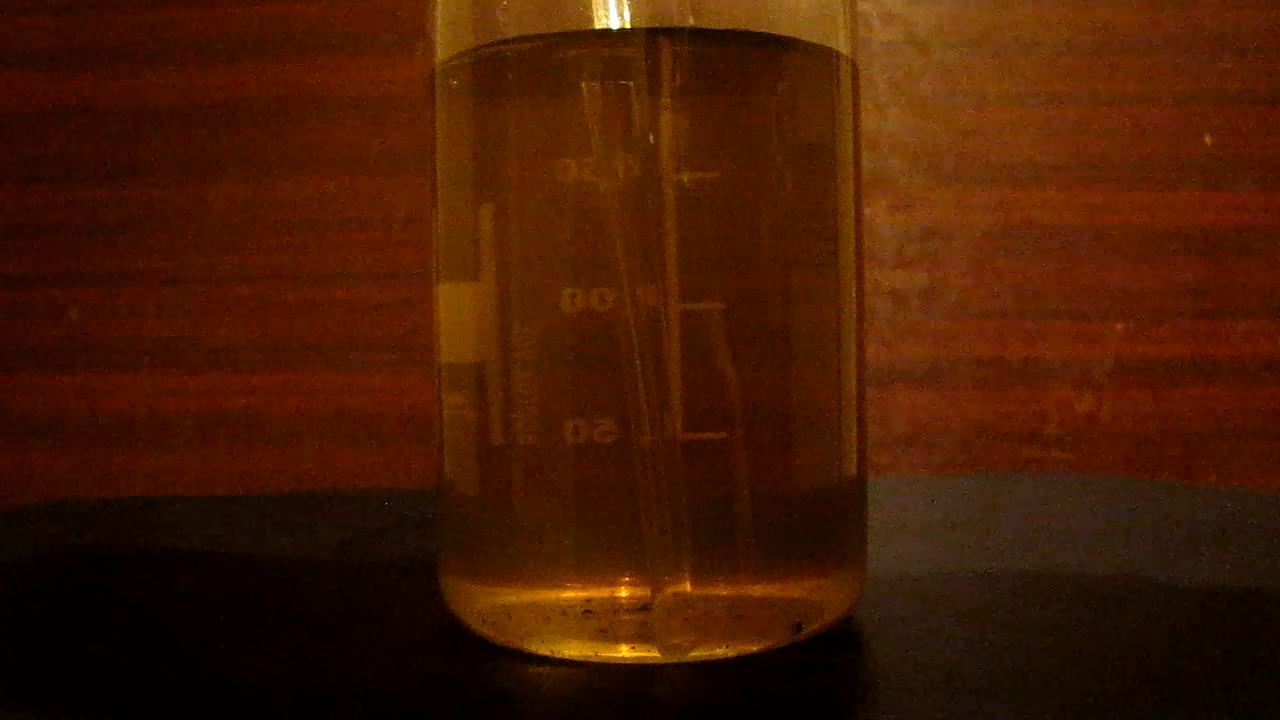
|